How to make crispy, crunchy, chewy French macarons! This French macaron recipe is perfect for beginners who want to learn the basics of making the perfect macaron. Read through this entire blog post to learn everything you need to know about making the perfect macaron shell with puffy feet and no hollows with tons of tips on troubleshooting. Or if you're in a hurry to get started, click the jump to recipe button.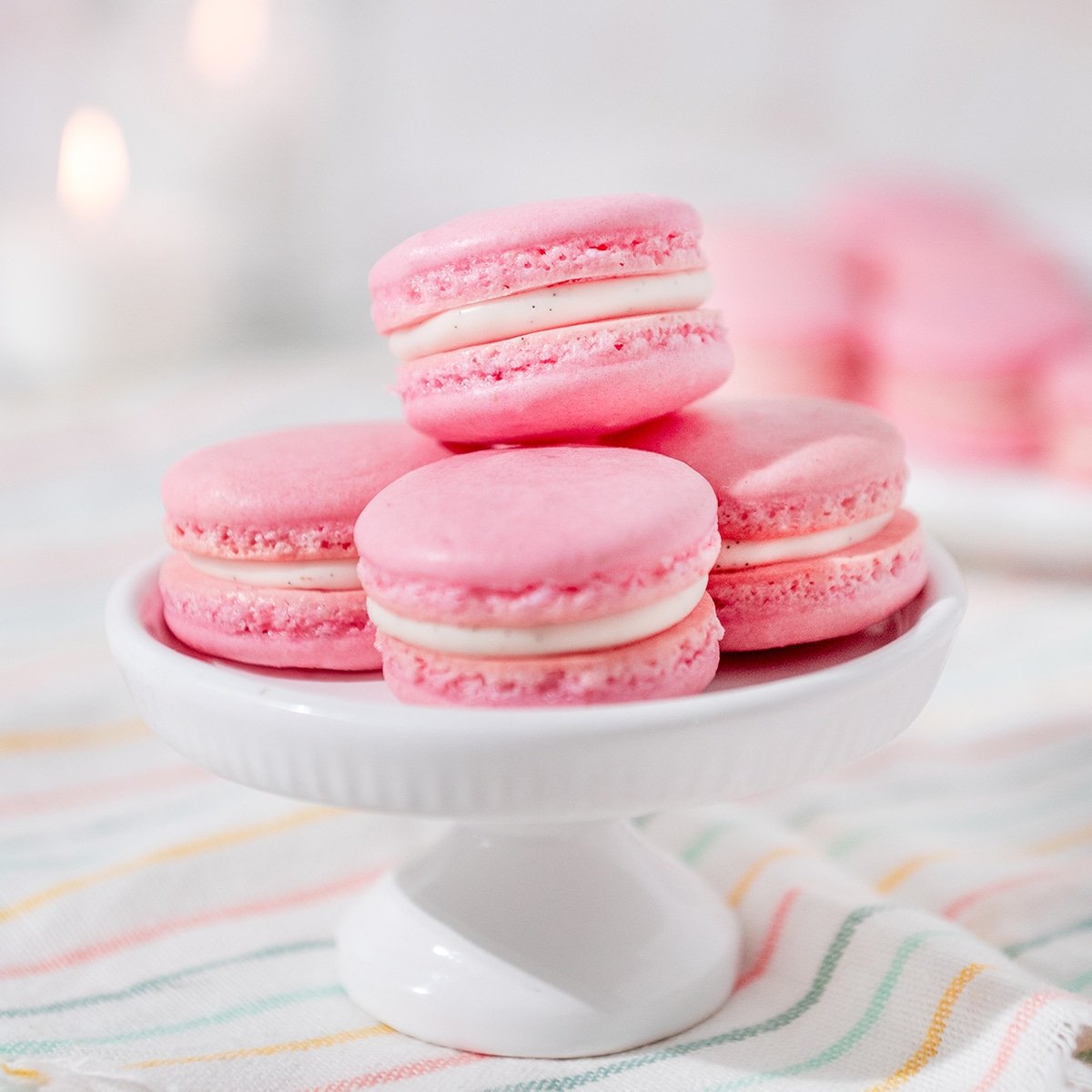
I was first introduced to the French macaron (pronounced Mack-uh-rhone) back in pastry school. I had never had a cookie like this before. Soft and chewy in the middle but crisp on the outside. The way you make macaron shells is different than other cookies too. You don't use any baking powder or even flour (yes they are gluten-free)!
Macarons get all their lift from whipped meringue which is then carefully folded into the almond flour and powdered sugar. The water in the egg whites turns to steam during baking which then lifts the shells and creates those dainty feet. This folding technique is called macaronage and is the trickiest part of making macarons. Follow my directions carefully and watch the video for nailing this folding technique.
Table of contents
The Different Types of Macarons
There are three different mixing methods for making macarons. The French method, the Italian method, and the Swiss method. This recipe is for French macarons but if you're curious about the other styles, it's good to learn about them. Try all the different styles to see which one works best for you. There isn't any "best" way to make macarons, just the one that works the best for you and your environment.
These methods refer to the type of meringue you start with. French meringue is where you sprinkle the sugar into the egg whites while whipping, Italian meringue is where you heat up the sugar on the stove and pour it into whipping egg whites, and Swiss meringue is where egg whites and sugar are warmed over a simmering pot of water until the sugar dissolves and then whipped.
The French macaron method is the most common for beginners because you do not have to have a candy thermometer or handle hot sugar. This method is great for just learning how to fold your batter properly, identify when to stop mixing, and practice your piping skills. The batter is more prone to over-folding but with the addition of powdered egg whites, your batter is less prone to spreading and overmixing.
The Swiss method is the least used method because, for just a little more effort, you can make Italian macarons that are more stable. Swiss macarons are more stable than French-style macarons but not by much because the sugar is just dissolved, not cooked to a high temperature. The Italian method is the most common method amongst professional macaron chefs because it produces the most consistent and stable macaron shells.
French Macaron Ingredients
Egg whites are the main ingredient for making a French macaron. I recommend using fresh egg whites that have been aged in the fridge for 2-4 days. This allows some of the moisture to evaporate from the egg whites and causes the tight proteins in the egg whites to relax. Relaxed protein means stronger meringue that is less prone to over-mixing and cracking. *Make sure you don't get any egg yolk into the whites or it can cause your meringue to collapse and there is no way to save it if that happens. Boxed egg whites are not recommended for making macarons because they don't whip up enough. Once you get more comfortable with making macarons, you may find that you no longer need to use aged egg whites.
Almond flour is the other ingredient needed to make perfect macarons. Almond flour is finely ground almonds. I like the brand from bobs red mill. Almond flour is different from almond meal so make sure you get the right kind.
Powdered sugar is what will make our macarons sweet and creates that crispy shell out the outside of the macaron shell.
Granulated sugar is added to whipping egg whites to create structure and causes the shell to form as well. Some pastry chefs prefer superfine sugar for a shinier macaron shell but it's not necessary.
Food coloring is needed to color your French macaron shells. I prefer to use powdered food coloring so that the extra liquid from the food coloring does not throw off these delicate cookies but if all you have is gel food coloring that is ok too. Just don't use that super liquid food color from the grocery store because it will make your batter runny.
This recipe uses vanilla extract for flavoring but you can use any liquid flavoring that you desire. You may have to adjust the flavoring amounts depending on how strong you want the flavor to be. Keep in mind you will also get flavor from the filling you choose.
Cream of tartar is an acid that helps your meringue batter keep its stability and prevents over-whipping. It's not 100% necessary but it does help!
Powdered egg whites can help strengthen your egg whites to prevent over-mixing. Again, not 100% necessary but it does help when you're a beginner.
Tools and Equipment
Kitchen scale - This is a must. Some recipes can be converted to cups without too many problems but this is not one of them. Exact measurements are required. You can get a kitchen scale at most department stores or this one from OXO that I like.
Glass or metal bowl - Plastic bowls hold onto fat particles which can interfere with your batter.
Stand mixer or electric hand mixer - This is necessary for mixing your meringue. You could do it by hand but your arm would probably fall off before you got your meringue mixed enough.
Sifter - This isn't absolutely necessary but if you want very shiny and smooth macaron shells, you'll want to sift your almond and powdered sugar.
Food Processor - Necessary for shiny and smooth macarons. Not necessary but if you don't use it, your macaron shells will be a bit lumpier.
Pastry bag and medium round piping tip - You will need these to pipe your macaron shells. The exact size of the piping tip isn't super important, but I typically use an Ateco 804-806.
Parchment Paper or silicone mat (not wax paper) - I have personally found that parchment paper works best for me when piping out my macaron shells. The paper allows for even baking and they release easily from the paper.
Two baking sheet pans - You want to pipe all of your macaron batter at once. It will not keep if you leave it in the bowl for too long after mixing.
How to Make French Macarons
Before You Begin
- Age your egg whites 2-4 days ahead of making your macarons. Crack and separate the eggs and store the whites in a container covered in plastic wrap.
- Take your egg whites out of the fridge 2-3 hours in advance. Room-temperature egg whites whip up better than cold egg whites.
- Begin by wiping your bowls, whisk, and tools down with some white vinegar. This will remove every trace of oil from the surface and help ensure the perfect macaron.
- Preheat your oven to 300ºF (148ºC).
- Trim the parchment paper to the size of your pan so that it fits perfectly inside.
- Place the macaron template under the parchment or make your own template by tracing circles that are roughly 1.5" wide and spaced about 1" apart. Turn the parchment over so that the marker does not transfer to your cookies.
- Measure out all your ingredients carefully using a food scale and set them aside. Having your ingredients ready to go will help ensure success.
Making French Macaron Batter
- Place your dry ingredients (almond flour, powdered sugar, and salt) into your food processor. Process for 5-second increments, three times. Shake the container as needed to ensure even mixing.
- Place your strainer over a large bowl.
- Sift the almond flour mixture to remove any large bits of almond. If you have to remove a lot, make sure to add the same amount of almond flour back in so that your batter ratio is not thrown off.
- Place your egg whites, cream of tartar, and meringue powder into the bowl of your stand mixer with the whisk attachment attached.
- Begin whisking your egg whites on medium speed until they are foamy. Medium speed will produce smaller, stronger air bubbles than whipping at high speed.
- Sprinkle in the granulated sugar slowly until it's all added and continue whisking on medium until you reach stiff peaks.
- Finally add the vanilla and mix until combined.
- Add your meringue to the dry ingredients and begin using the "J fold" method by making a line down the center of your mixture with the rubber spatula and then up and to the left of the bowl. Rotate the bowl 90º and repeat this "J fold" for 10 strokes.
- Add your food coloring in at this point. Remember, a little goes a long way. Fold two more times.
- Begin testing your batter after stroke 12 for readiness by lifting the spatula out of the bowl to see how the batter runs off the spatula. If the batter stays clumped or does not fall off the spatula, fold it one more time and test again.
- Repeat this process until the batter falls off the spatula in a "V" shape. Another test you can do is to firmly bang your bowl onto the counter to see if the batter settles into itself. If it does, it's ready. If it doesn't move it still needs more mixing. Some pastry chefs recommend making a figure 8 with the batter to test readiness but I find this often causes overmixing so looking for the "V" is a safer option.
- Prepare your piping bag with a ½" round piping tip by cutting the end of the piping bag off and inserting the tip into the bag.
- Twist the piping tip and bag together to seal the bottom of the piping bag and then press the bag into the tip so that the filling does not leak out of the piping bag.
- Fold the top of the piping bag down over your hand and scoop the macaron batter into the piping bag with a rubber spatula. Or you can place the piping bag into a tall glass so both your hands are free.
- Lay the bag flat on the counter and push all the batter to the bottom of the piping bag so there are no air bubbles and then twist the top to prevent leaking. Tie the top into a knot if desired.
- When ready to pipe, pull the piping tip out and move the batter down into the piping tip by squeezing the batter gently. Pro-tip: When you are not piping, hold the piping bag straight up to prevent leaking. When ready to pipe turn the bag over and immediately begin piping.
Piping the Macarons
Piping macarons for the first time can take some practice but don't worry, even if they don't look perfect they will still taste just as delicious! Always eat the evidence I say.
- Hold the piping bag straight up and down over a circle, about 1" away from the prepared baking sheets.
- Begin squeezing, do not rotate or move your bag.
- The piping tip opening should be touching the macaron at all times.
- Stop piping just inside the circle (at the dotted line if you're using my template).
- Make a small quick "C" circular motion with the tip to remove it from the piped cookie. Try not to just lift up because this will leave little peaks on top of your cookies.
- After all your macarons are piped, lift your pan up about 6" and drop it onto your work surface a few times. This helps pop any large bubbles that may have got trapped in your batter pop so they don't crack your macarons.
- Use a needle or toothpick to fix any bubbles if you still have some.
- Don't forget to remove the templates under the parchment paper before baking.
- Allow the macarons to sit at room temperature for 15-30 minutes to develop a "skin" on them before baking. You should be able to lightly touch the top of the cookie and the batter will not stick to your finger. Do not leave your macarons out to dry for longer than 30 minutes or the shell can get too thick and your macaron shells won't develop feet.
- Remove the template and place a small dab of macaron batter under the corner of each piece of parchment paper to keep it from blowing all over the place in the oven.
- Bake the macarons in the oven at 300ºF for 10 minutes. Rotate the pan after 5 minutes to promote even baking as well as let some of the steam out of the oven which helps to prevent cracking.
- Test one macaron by gently lifting it from the parchment paper with a knife. If it releases, your macarons are done. If it's sticking, continue baking and check every minute until they release.
- Remove the baking tray from the oven and pull the parchment off the pan by sliding it gently onto a wire rack so that your macarons do not continue to bake.
Making Ganache Filling
This is to make a very basic white chocolate ganache filling using cream. You can use this same ratio to make fruit puree ganache by replacing the cream with a puree such as raspberry, lemon, passion fruit, etc. You can also add extracts to your ganache. Get creative with your flavors! This is the best way to experiment with the flavors of macarons without messing with the ingredients of the macaron shells.
- Combine your chocolate and cream together in a microwave-safe bowl.
- Heat the mixture for one minute then whisk together.
- Continue heating the mixture in 30-second increments until the chocolate is melted and everything is mixed together smoothly. Add white food coloring if you want the ganache to be more transparent.
- Add the butter and vanilla, then stir together until it's melted and combined.
- Place the ganache into a piping bag and flatten the mixture out until it is pretty thin.
- Place the ganache into the freezer for about 10 minutes to help it set up.
- Push the ganache to the end of the piping bag with a bowl scraper.
- Cut a small ⅛" hole in the bottom of the piping bag and begin filling your macaron shells with the ganache.
- Place a second shell on top and now your macarons are complete!
Troubleshooting Macaron Problems
If you are having problems with your macarons, take a look at some of the troubleshooting techniques below to see if you can fix the issue. Remember to only try one fix at a time so if it works, you know what you changed. Try not to attempt different flavor combinations until you've mastered a base recipe that works for you. All of these suggestions are based on the assumption that you have measured your ingredients properly using a kitchen scale.
FAQ
This macaron recipe works best with exact measurements, so you must use a food scale.
- Hollow shells can be from egg whites that are not aged, therefore the protein structure is not strong enough to make a proper shell. Age your egg whites for at least 48 hours or be sure to add the meringue powder to strengthen your shells.
- Another cause could be trapped air before baking. Be sure you bang your tray a couple of times to release any trapped bubbles in the macarons before baking.
- The oven temperature could be too hot. Decrease the temperature by 25 degrees the next time you bake.
- Improper mixing. Make sure you are mixing your batter to the correct consistency
- Undermixing can be the cause of no development of feet. Make sure you are mixing your batter to the proper consistency before piping.
- Oven temperature can cause your shells to dry out before they fully bake. Use an oven thermometer to make sure your oven isn't running hot or cold. If the temperature is too low, increase the temperature by 25 degrees the next time you bake.
Your macarons will be wrinkly on top if they haven't rested long enough after piping. Or if your oven temperature is too low.
- The egg whites could have been whipped for too long. Try whipping a little less or use aged egg whites.
- You over-folded the macaron batter. Make sure you stop mixing when your batter forms a "V" as it falls off the spatula.
Improper mixing. Make sure you use the "J fold" method and use sifted ingredients.
- The oven temperature is too hot. Make sure you check your oven temperature with a thermometer and rotate your macarons halfway through baking.
- The macaron shells did not develop a skin before baking. Make sure you test your macaron shells with your finger to see if a skin has formed before baking.
Macarons taste even better after they have been refrigerated. The interiors turn wonderfully chewy and the flavors have time to develop. Place your finished macarons into an airtight container and keep them in the fridge for up to a week. You can freeze your macarons for a long time and just take them out of the freezer whenever you have the desire to enjoy your tasty homemade macarons.
Related Recipes
Recipe

Equipment
- Food Scale
- Stand Mixer
- Sifter
- Parchment Paper
- Piping Bag
- 802 Round Piping Tip
- Food processor
Ingredients
- 4 ounces almond flour
- 8 ounces powdered sugar
- 4 ounces egg whites aged overnight in the fridge and brought to room temperature
- ¼ teaspoon cream of tartar
- ½ teaspoon meringue powder optional
- 2 ounces granulated sugar super fine
- 1 teaspoon vanilla extract
- ¼ teaspoon salt
- 1 drop gel food coloring optional
White Chocolate Ganache
- 7 ounces white chocolate
- 4 ounces heavy cream
- 1.5 ounces unsalted butter
- 1 whole vanilla bean or 1 teaspoon extract
Instructions
Before you Begin
- Age your egg whites 2-4 days ahead of making your macarons. Crack and separate the eggs and store the whites in a container covered in plastic wrap.
- Take your egg whites out of the fridge 2-3 hours in advance. Room-temperature egg whites whip up better than cold egg whites.
- Begin by wiping your bowls, whisk, and tools down with some white vinegar. This will remove every trace of oil from the surface and help ensure the perfect macaron.
- Preheat your oven to 300ºF (148ºC).
- Trim the parchment paper to the size of your pan so that it fits perfectly inside.
- Place the macaron template under the parchment or make your own template by tracing circles that are roughly 1.5" wide and spaced about 1" apart. Turn the parchment over so that the marker does not transfer to your cookies.
- Measure out all your ingredients carefully using a food scale and set them aside. Having your ingredients ready to go will help ensure success.
Making the Macaron Batter
- Place your dry ingredients (almond flour, powdered sugar, and salt) into your food processor. Process for 5-second increments, three times. Shake the container as needed to ensure even mixing.
- Place your strainer over a large bowl.
- Sift the almond flour mixture to remove any large bits of almond. If you have to remove a lot, make sure to add the same amount of almond flour back in so that your batter ratio is not thrown off.
- Place your egg whites, cream of tartar, and meringue powder into the bowl of your stand mixer with the whisk attachment attached.
- Begin whisking your egg whites on medium speed until you reach soft peaks. Medium speed will produce smaller, stronger air bubbles than whipping at high speed.
- Sprinkle in the granulated sugar slowly until it's all added and continue whisking on medium until you reach stiff peaks.
- Finally, add the vanilla and mix until combined.
- Add your meringue to the dry ingredients and begin using the "J fold" method by making a line down the center of your mixture with the rubber spatula and then up and to the left of the bowl. Rotate the bowl 90º and repeat this "J fold" for 10 strokes.
- Add your food coloring in at this point. Remember, a little goes a long way. Fold two more times.
- Begin testing your batter after stroke 12 for readiness by lifting the spatula out of the bowl to see how the batter runs off the spatula. If the batter stays clumped or does not fall off the spatula, fold it one more time and test again.
- Repeat this process until the batter falls off the spatula in a "V" shape. Another test you can do is to firmly bang your bowl onto the counter to see if the batter settles into itself. If it does, it's ready. If it doesn't move it still needs more mixing. Some pastry chefs recommend making a figure 8 with the batter to test readiness but I find this often causes overmixing so looking for the "V" is a safer option.
- Prepare your piping bag with a ½" round piping tip by cutting the end of the piping bag off and inserting the tip into the bag.
- Twist the piping tip and bag together to seal the bottom of the piping bag and then press the bag into the tip so that the filling does not leak out of the piping bag.
- Fold the top of the piping bag down over your hand and scoop the macaron batter into the piping bag with a rubber spatula. Or you can place the piping bag into a tall glass so both your hands are free.
- Lay the bag flat on the counter and push all the batter to the bottom of the piping bag so there are no air bubbles and then twist the top to prevent leaking. Tie the top into a knot if desired.
- When ready to pipe, pull the piping tip out and move the batter down into the piping tip by squeezing the batter gently. Pro-tip: When you are not piping, hold the piping bag straight up to prevent leaking. When ready to pipe turn the bag over and immediately begin piping.
Piping the Macarons
- Hold the piping bag straight up and down over a circle, about 1" away from the prepared baking sheets.
- Begin squeezing, do not rotate or move your bag.
- The piping tip opening should be touching the macaron at all times.
- Stop piping just inside the circle (at the dotted line if you're using my template).
- Make a small quick "C" circular motion with the tip to remove it from the piped cookie. Try not to just lift up because this will leave little peaks on top of your cookies.
- After all your macarons are piped, lift your pan up about 6" and drop it onto your work surface a few times. This helps pop any large bubbles that may have got trapped in your batter pop so they don't crack your macarons.
- Use a needle or toothpick to fix any bubbles if you still have some.
- Don't forget to remove the templates under the parchment paper before baking.
- Allow the macarons to sit at room temperature for 15-30 minutes to develop a "skin" on them before baking. You should be able to lightly touch the top of the cookie and the batter will not stick to your finger. Do not leave your macarons out to dry for longer than 30 minutes or the shell can get too thick and your macaron shells won't develop feet.
- Remove the template and place a small dab of macaron batter under the corner of each piece of parchment paper to keep it from blowing all over the place in the oven.
- Bake the macarons in the oven at 300ºF for 10 minutes. Rotate the pan after 5 minutes to promote even baking as well as let some of the steam out of the oven which helps to prevent cracking.
- Test one macaron by gently lifting it from the parchment paper with a knife. If it releases, your macarons are done. If it's sticking, continue baking and check every minute until they release.
- Remove the baking tray from the oven and pull the parchment off the pan by sliding it gently onto a wire rack so that your macarons do not continue to bake.
Making White Chocolate Ganache
- Combine your chocolate and cream together in a microwave-safe bowl.
- Heat the mixture for one minute then whisk together.
- Continue heating the mixture in 30-second increments until the chocolate is melted and everything is mixed together smoothly.
- Add the butter and vanilla, then stir together until it's melted and combined.
- Place the ganache into a piping bag and flatten the mixture out until it is pretty thin.
- Place the ganache into the freezer for about 10 minutes to help it set up.
- Push the ganache to the end of the piping bag with a bowl scraper.
- Cut a small ⅛" hole in the bottom of the piping bag and begin filling your macaron shells with the ganache.
- Place a second shell on top and now your macarons are complete!
Video
Notes
- Egg whites are the main ingredient for making a French macaron. I recommend using fresh egg whites that have been aged in the fridge for 2-4 days. This allows some of the moisture to evaporate from the egg whites and causes the tight proteins in the egg whites to relax. Relaxed protein means stronger meringue that is less prone to over-mixing and cracking.
- Almond flour is different from almond meal so make sure you get the right kind.
- Some pastry chefs prefer superfine granulated sugar for a shinier macaron shell but regular sugar will work as well.
- Cream of tartar is an acid that helps your meringue batter keep its stability and prevents over-whipping. It's not 100% necessary but it does help!
- Powdered egg whites can help strengthen your egg whites to prevent over-mixing. Again, not 100% necessary but it does help when you're a beginner.
- A kitchen scale is a must. Some recipes can be converted to cups without too many problems but this is not one of them. Exact measurements are required. You can get a kitchen scale at most department stores.
- Stand mixer or electric hand mixer - This is necessary for mixing your meringue. You could do it by hand but your arm would probably fall off before you got your meringue mixed enough.
- Glass or metal bowl - Plastic bowls hold onto fat particles which can interfere with your batter.
- Pastry bag and medium round piping tip - You will need these to pipe your macaron shells. The exact size of the piping tip isn't super important, but I typically use an Ateco 804-806.
- Parchment Paper or silicone mat (not wax paper) - I have personally found that parchment paper works best for me when piping out my macaron shells. The paper allows for even baking and they release easily from the paper.
- Two baking sheet pans - You want to pipe all of your macaron batter at once. It will not keep if you leave it in the bowl for too long after mixing.
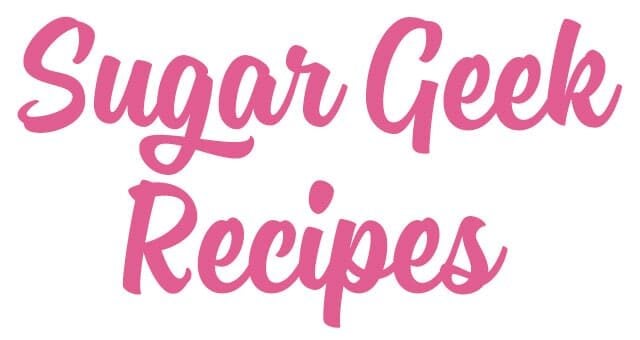

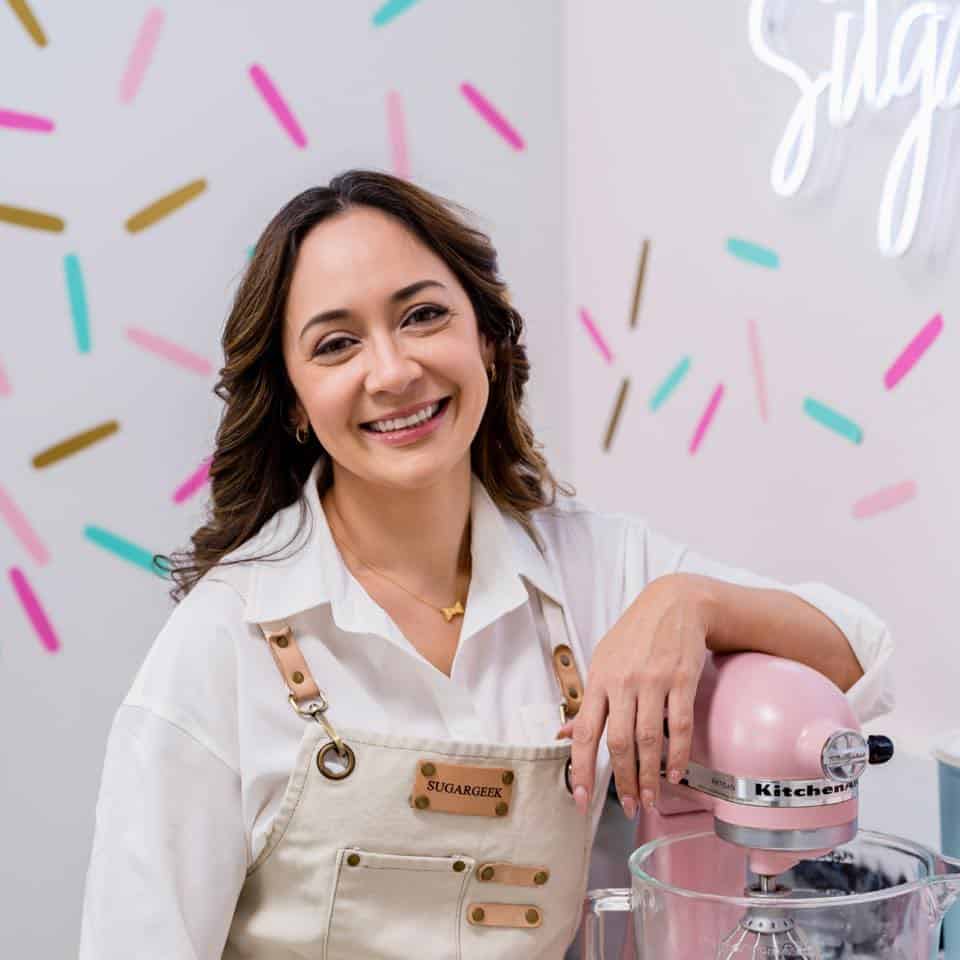

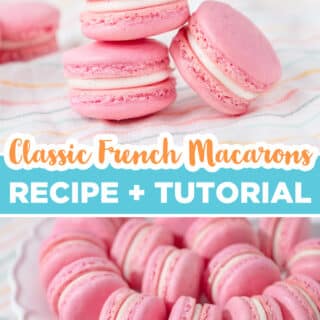
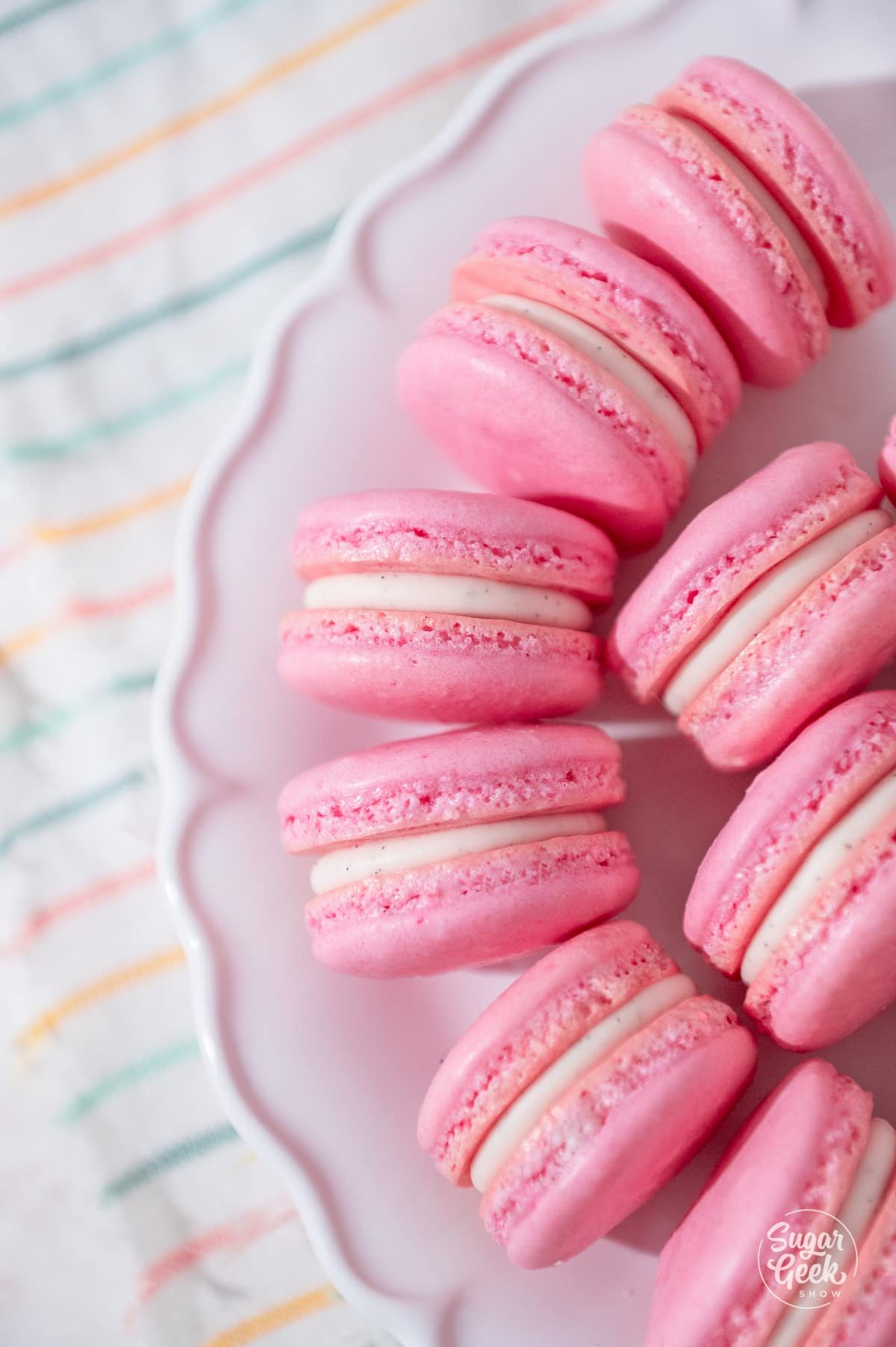
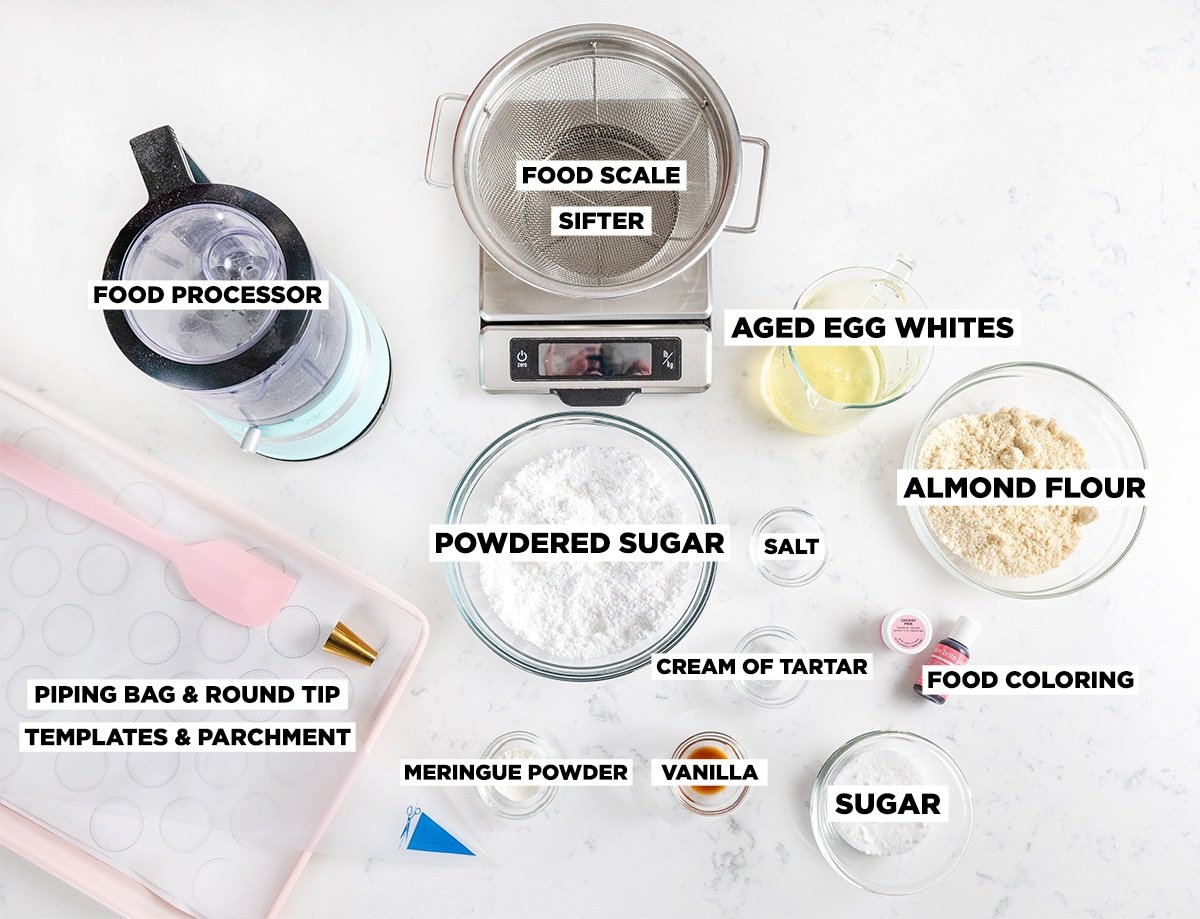
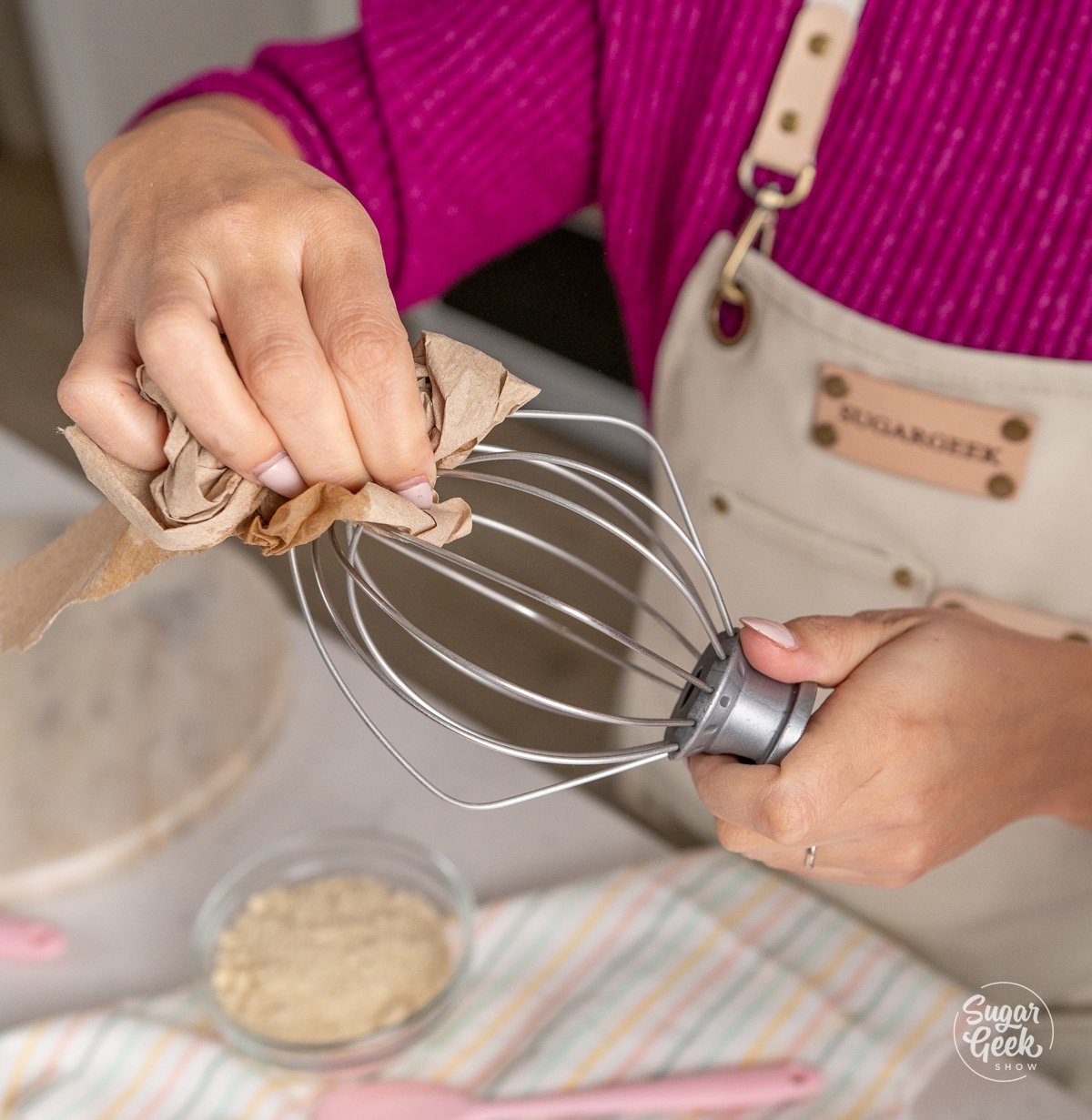
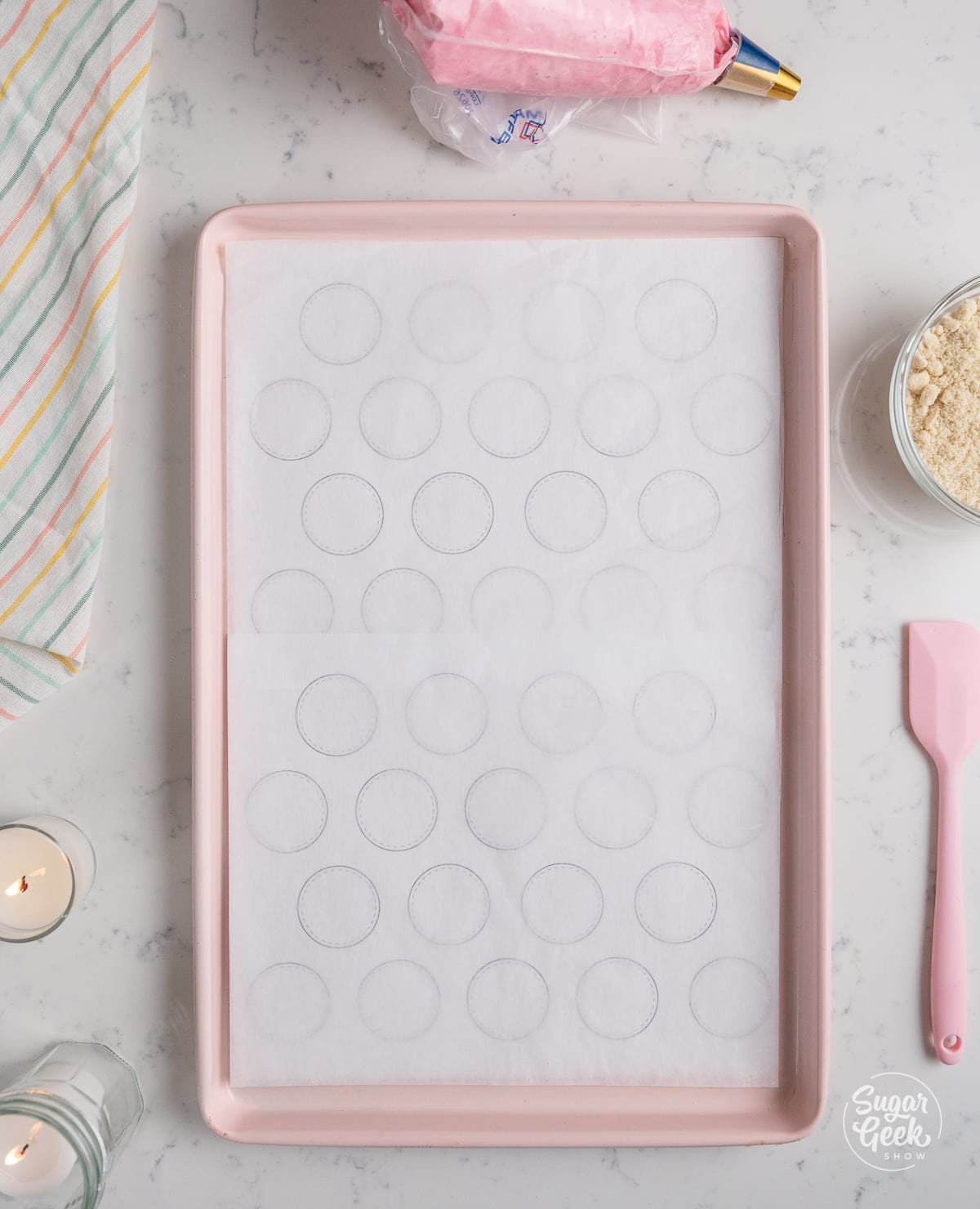
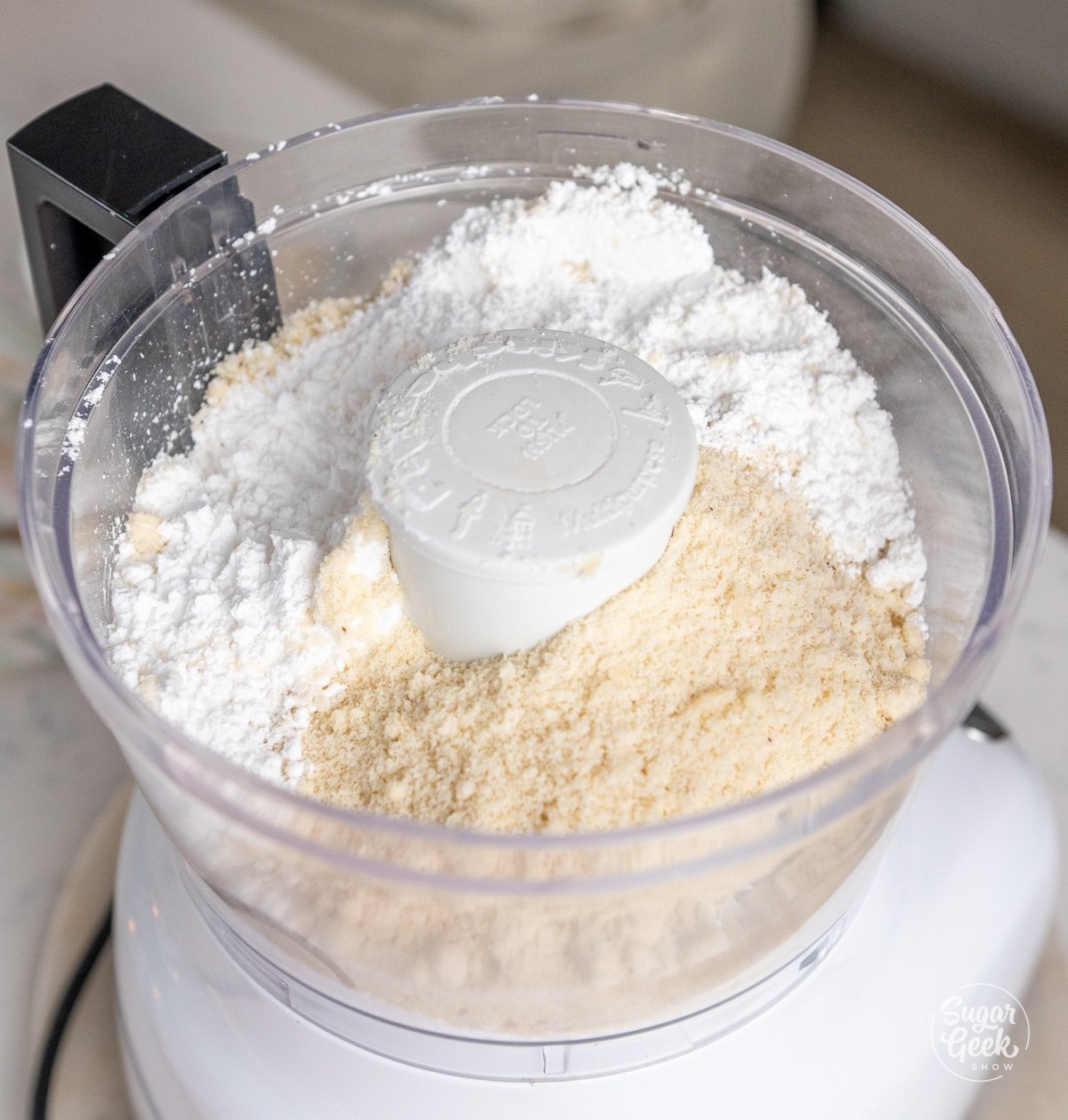
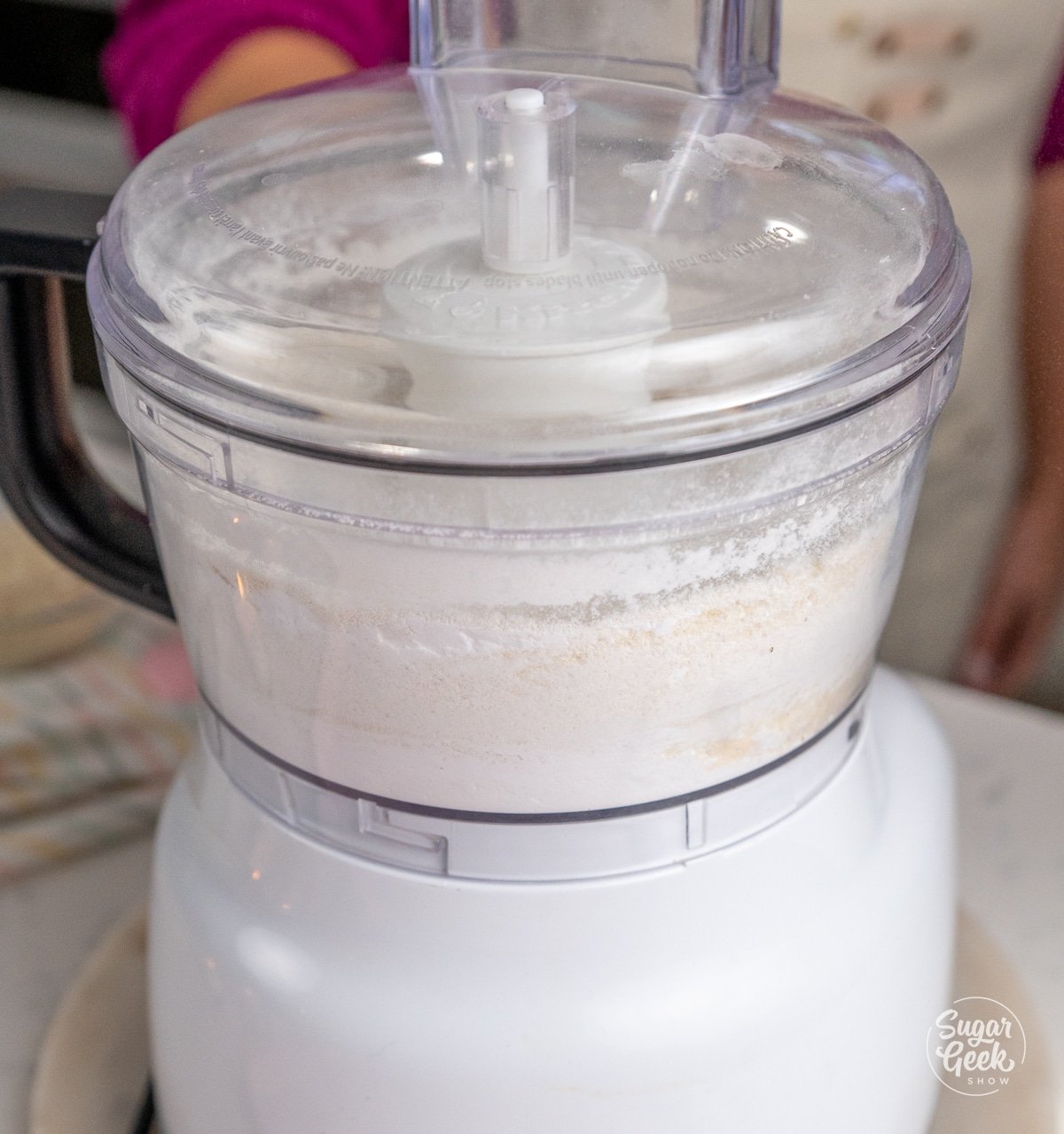
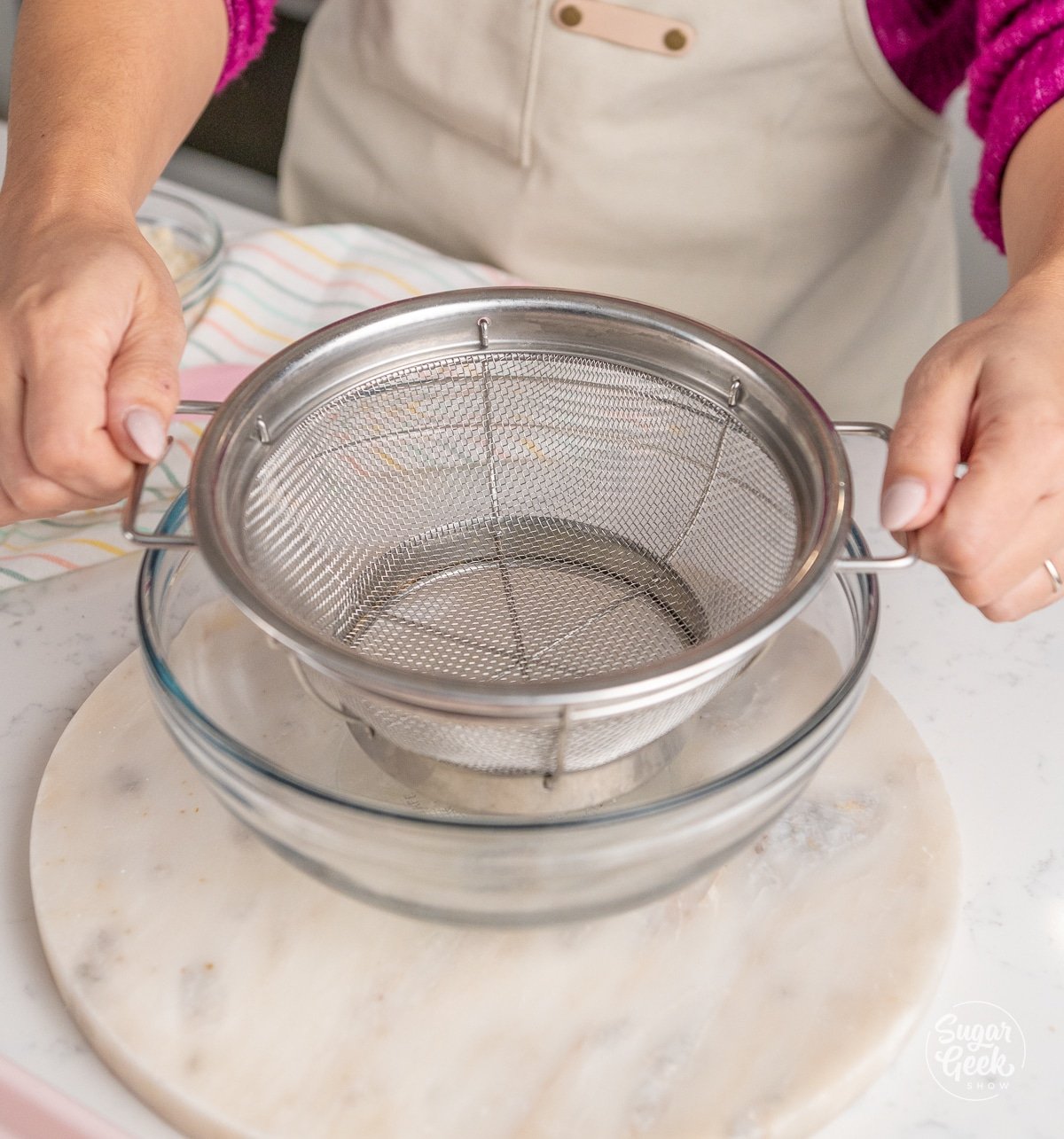
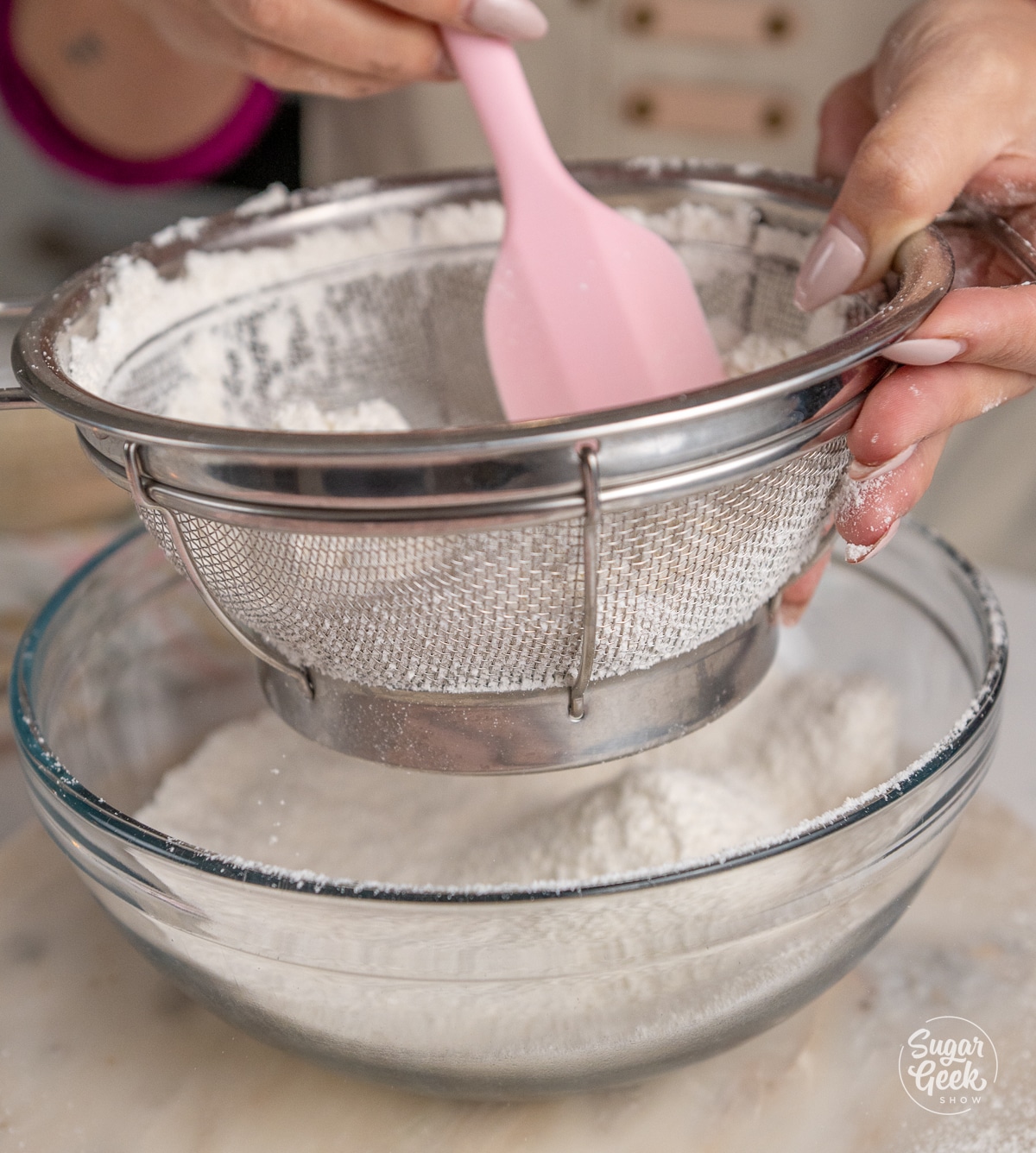
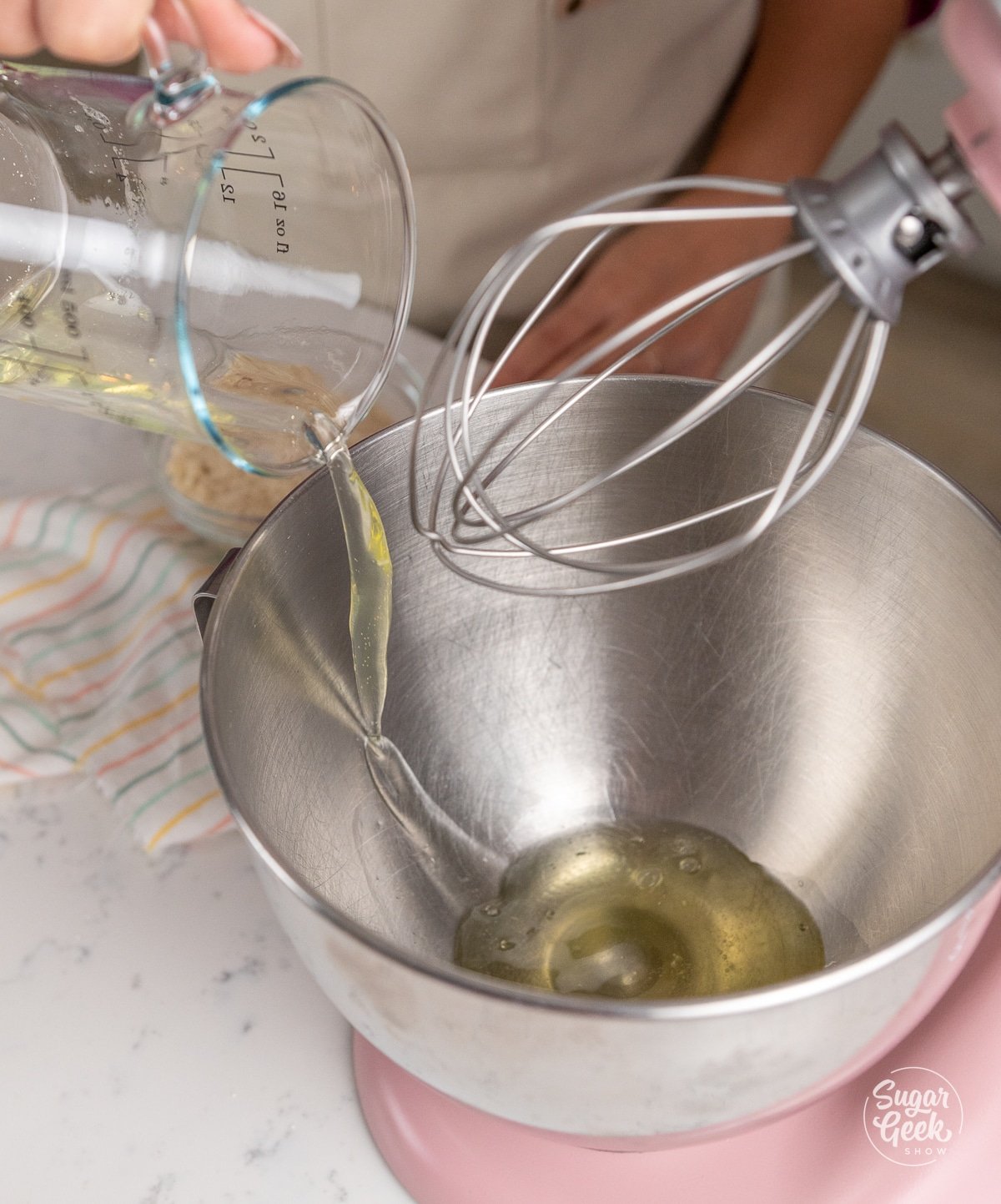
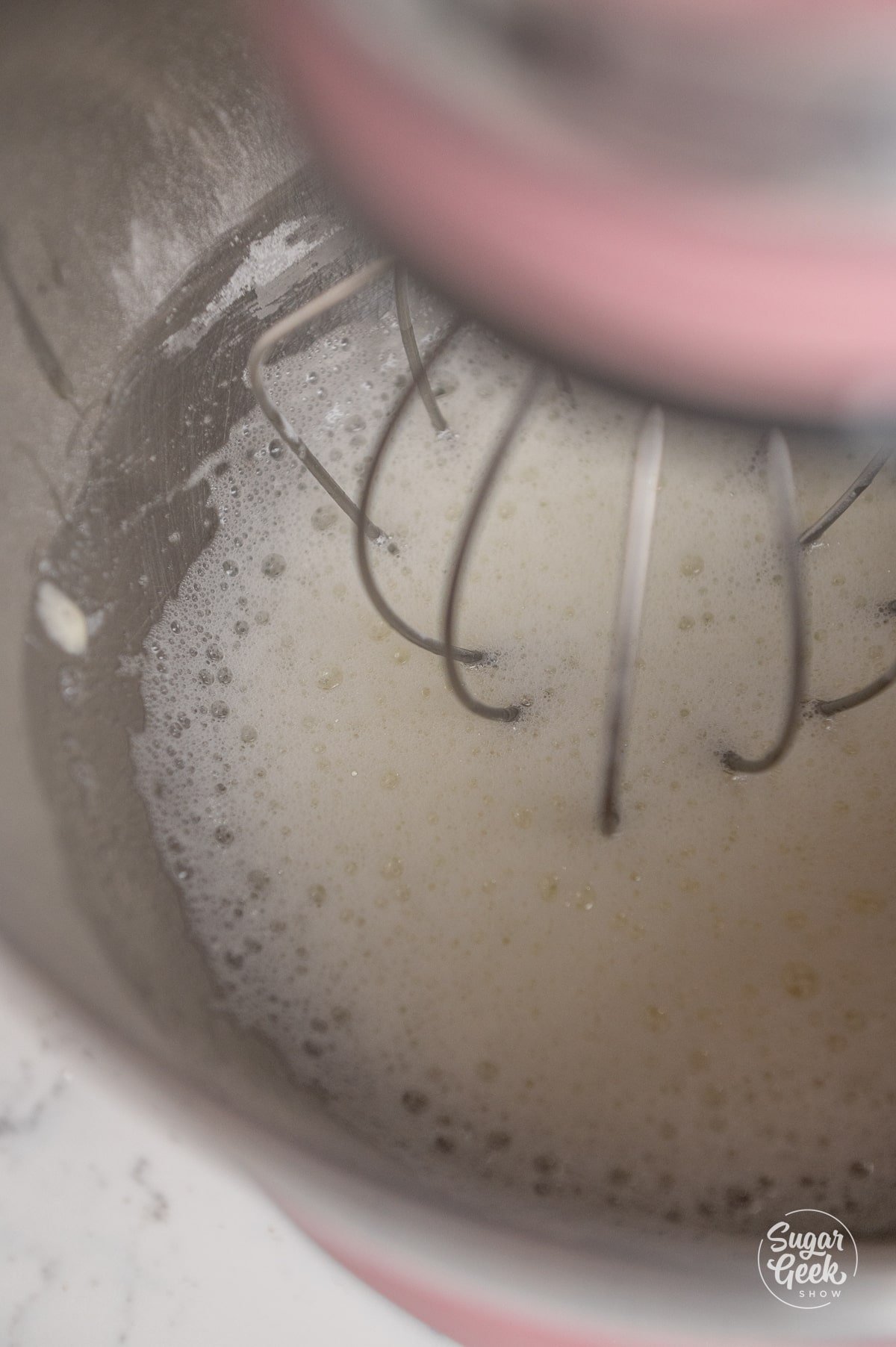
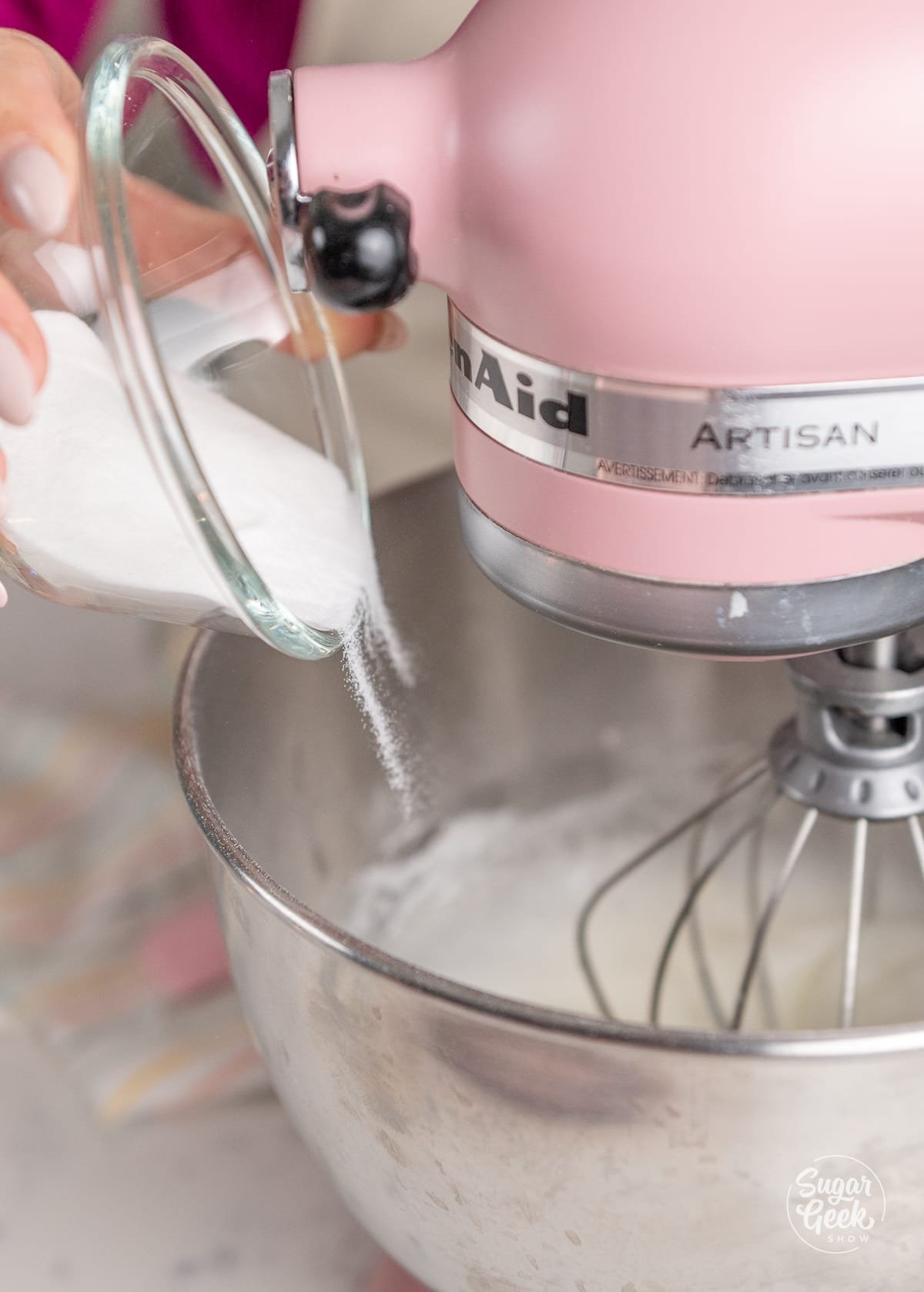
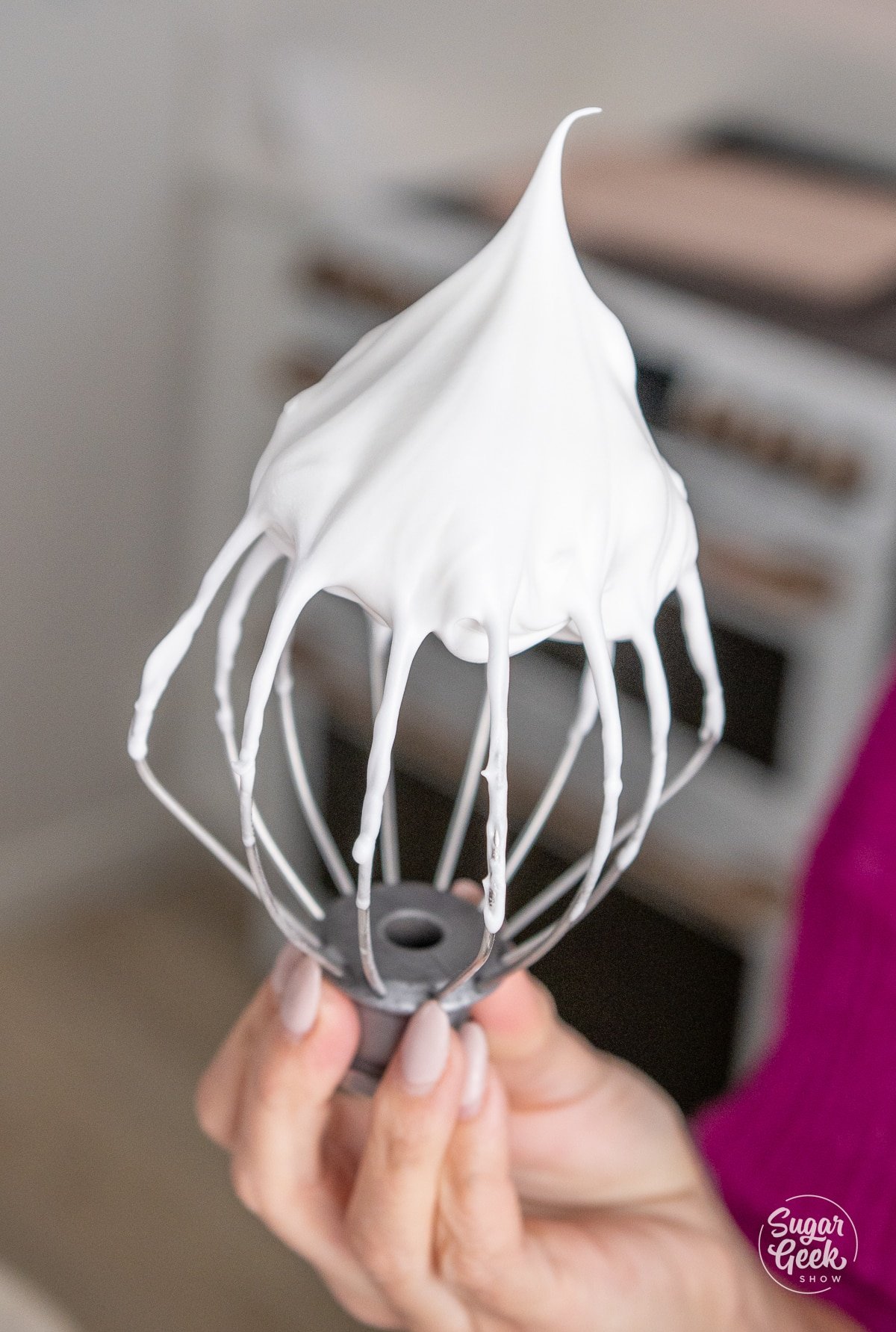
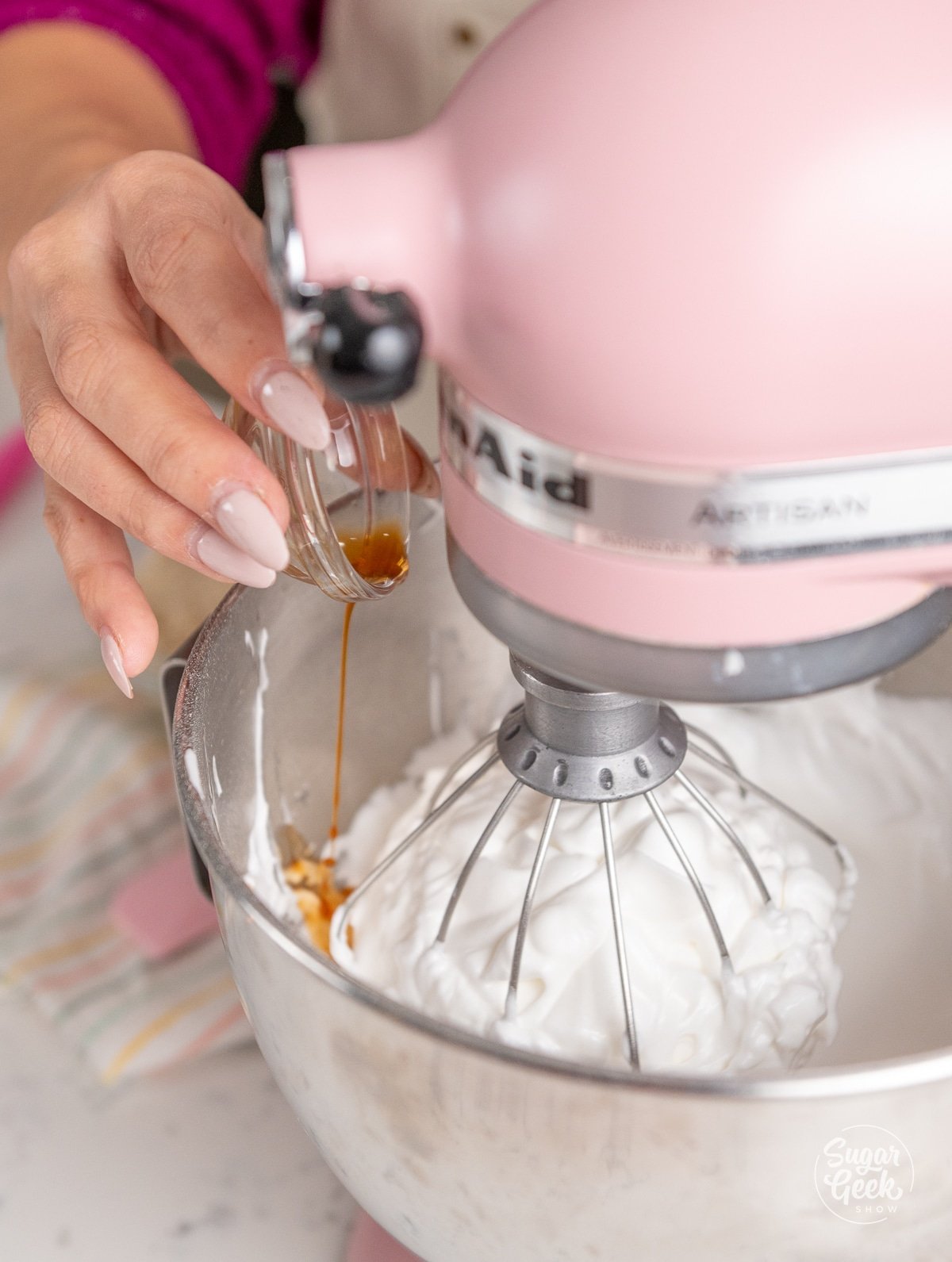

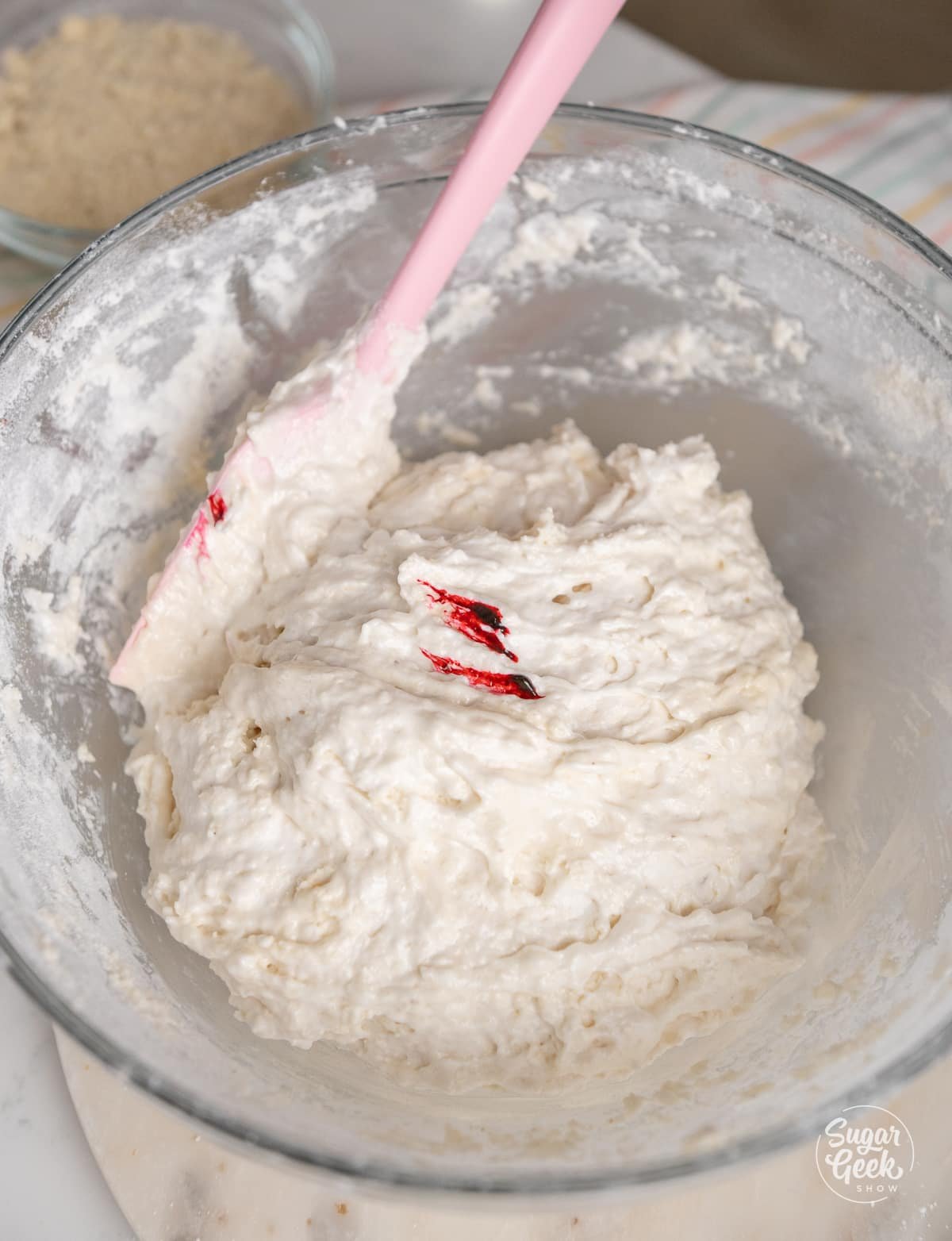
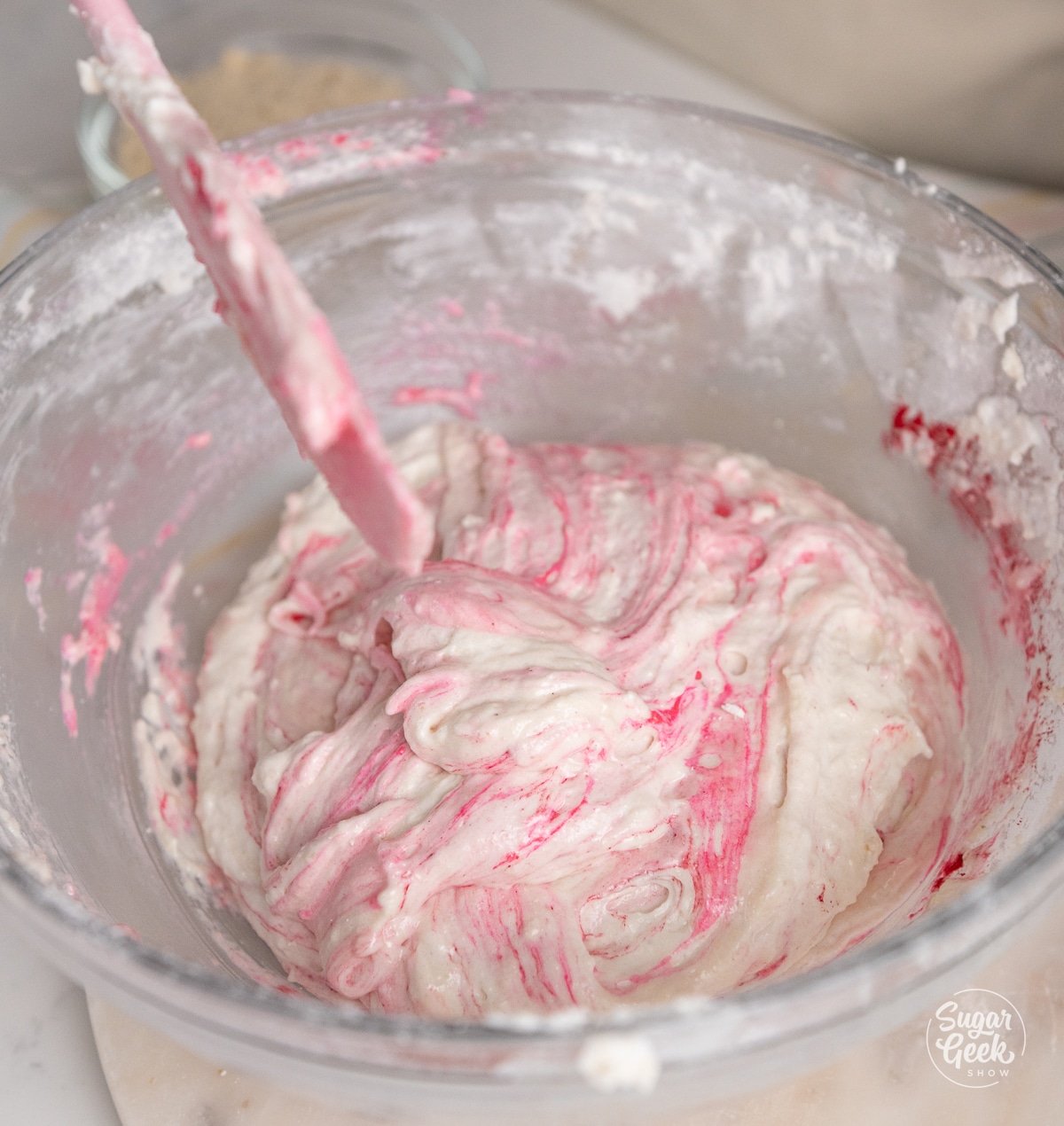
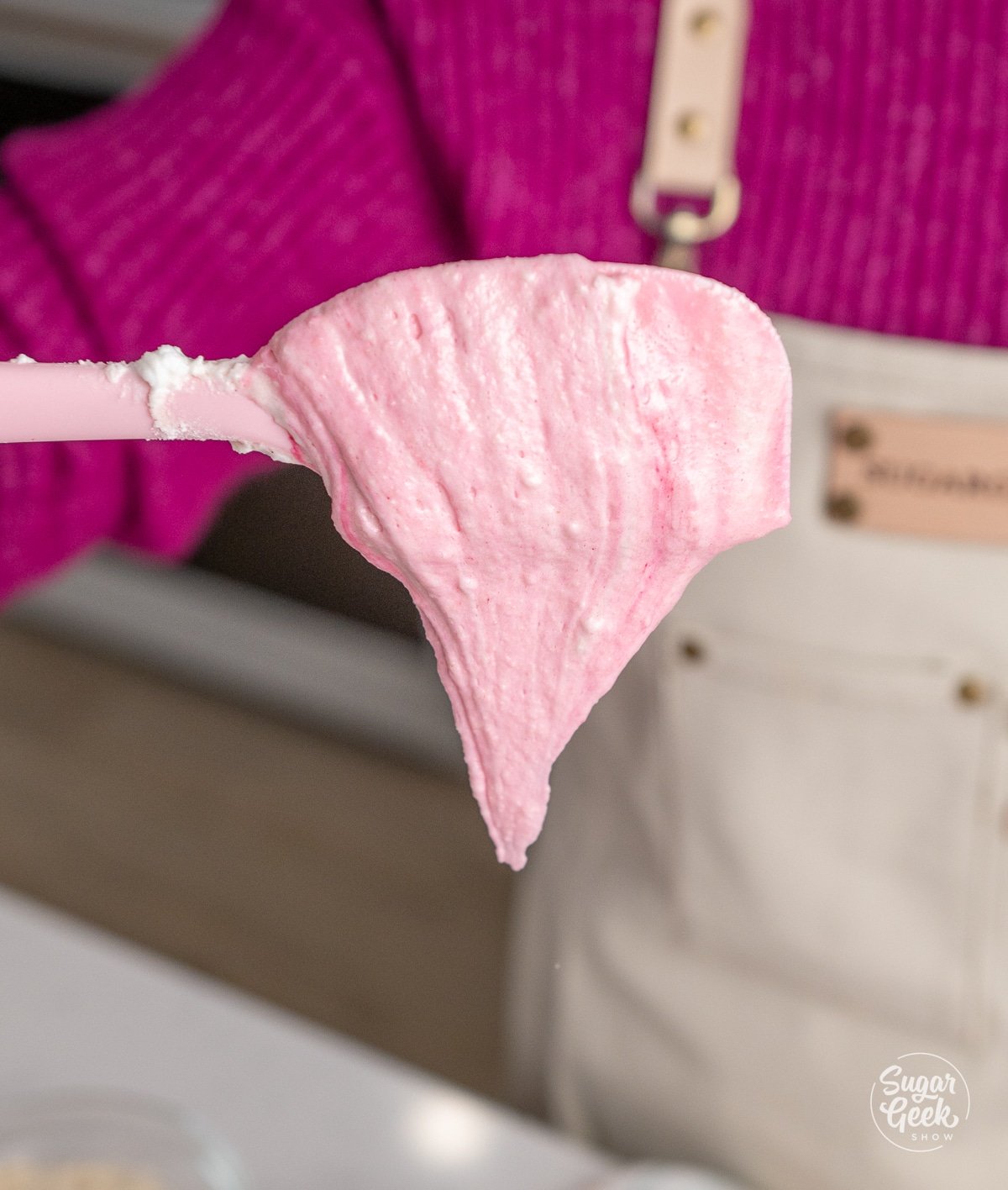
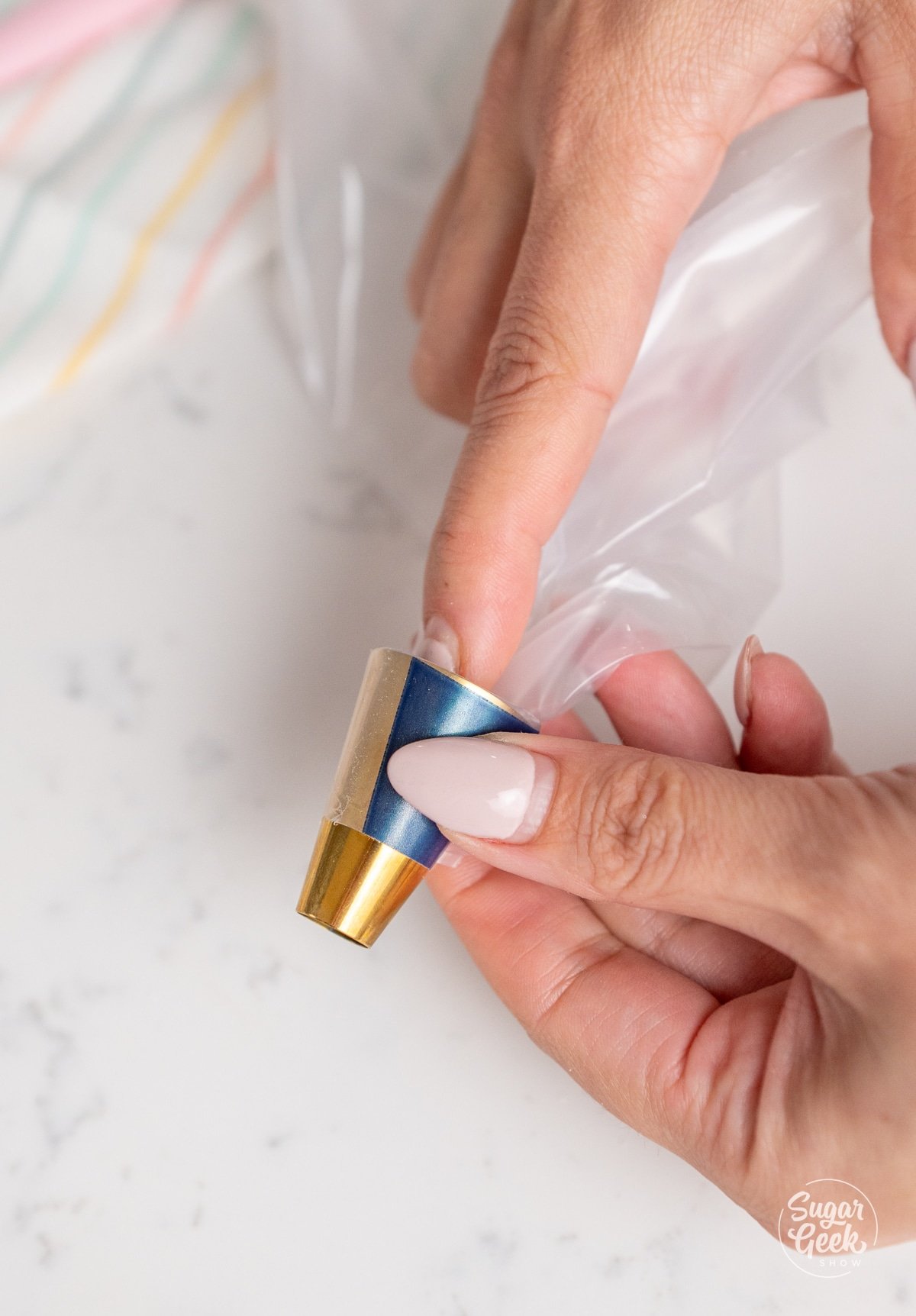
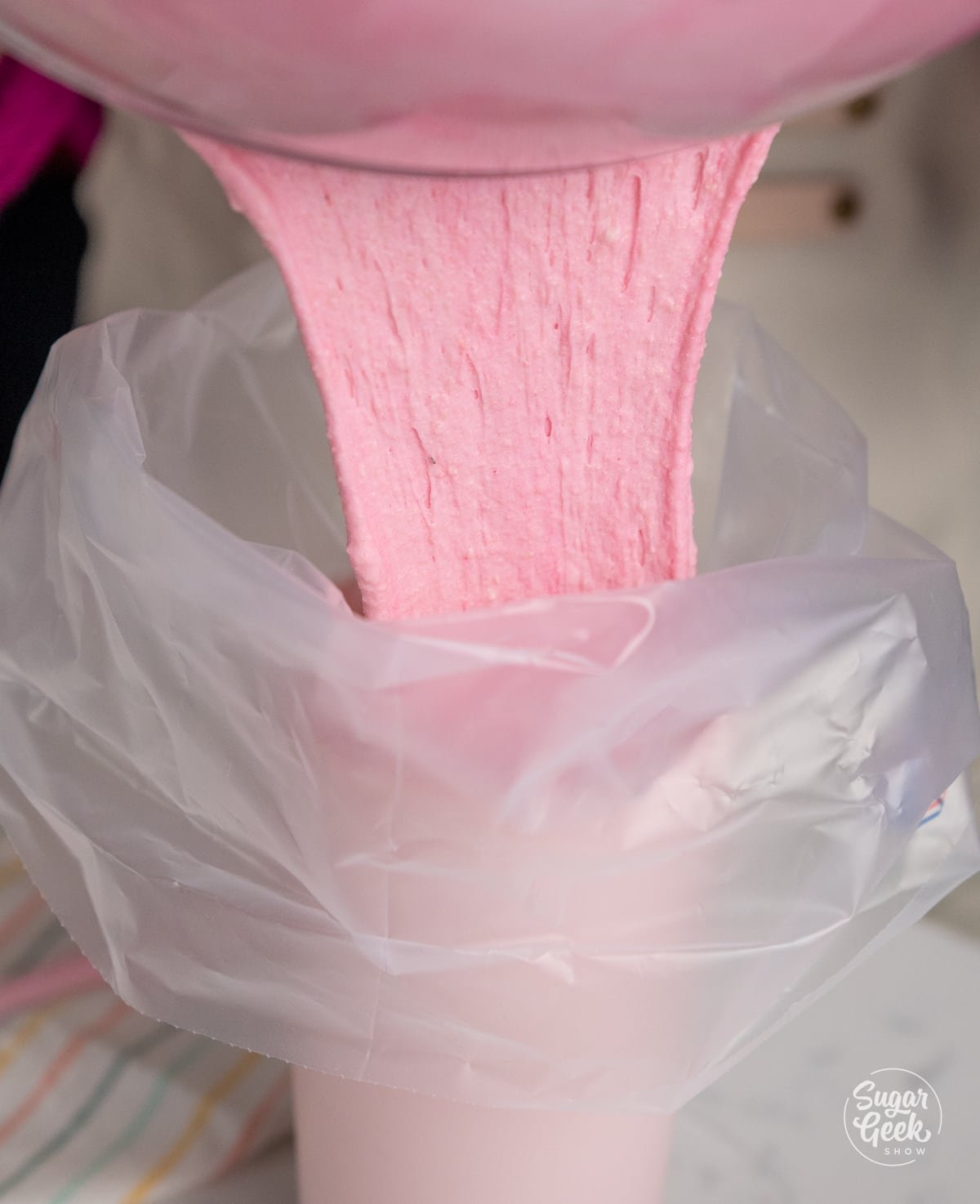
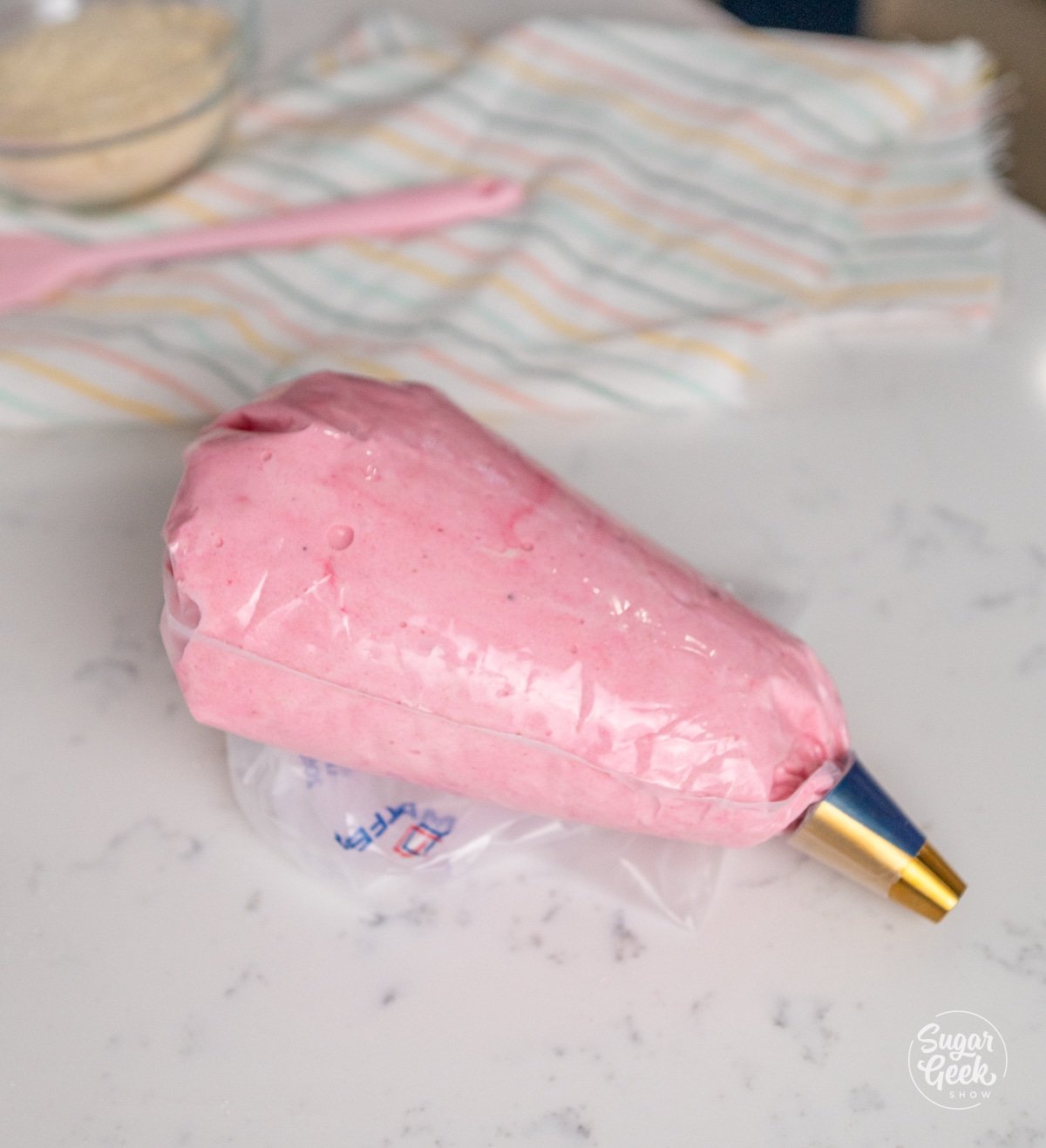
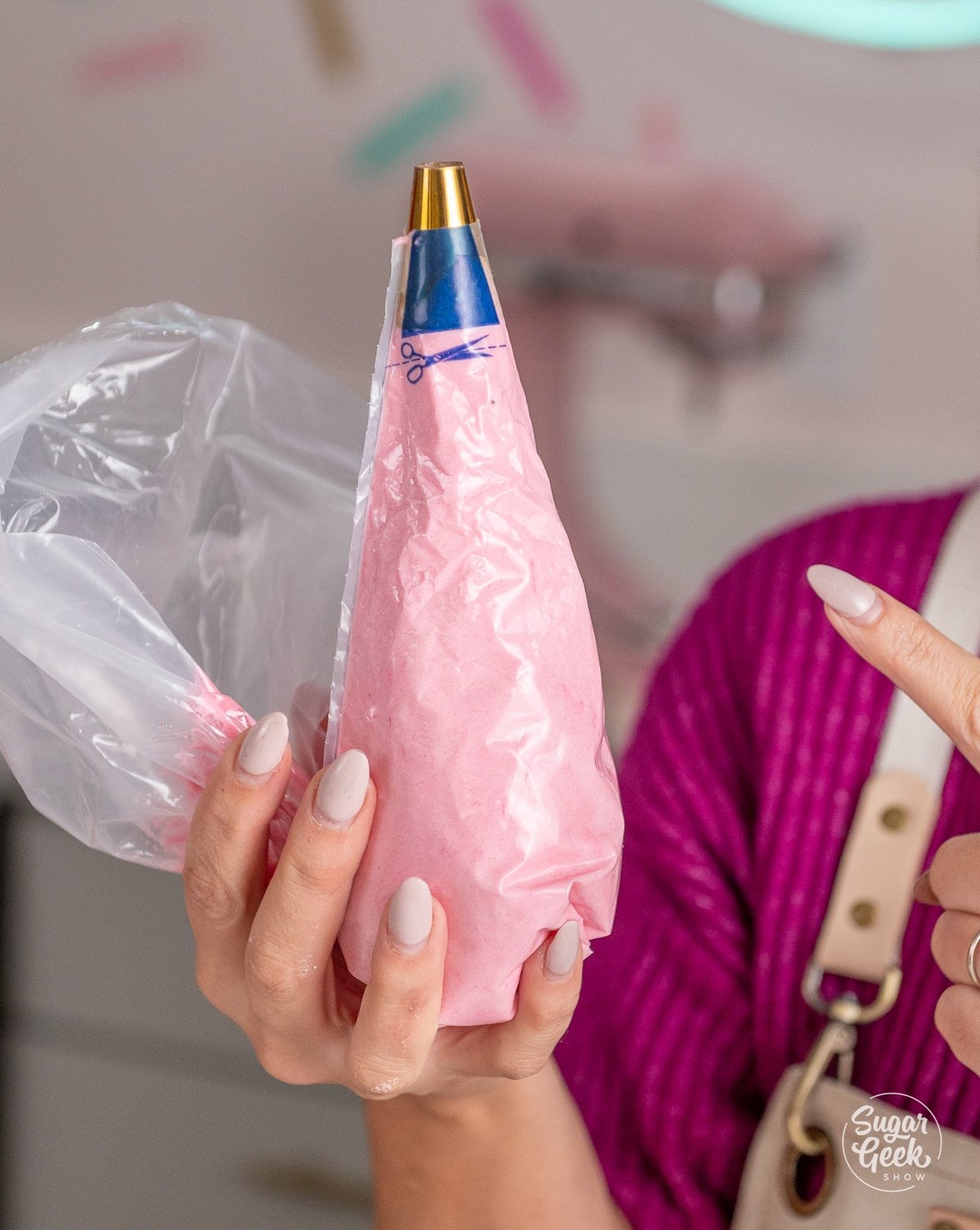
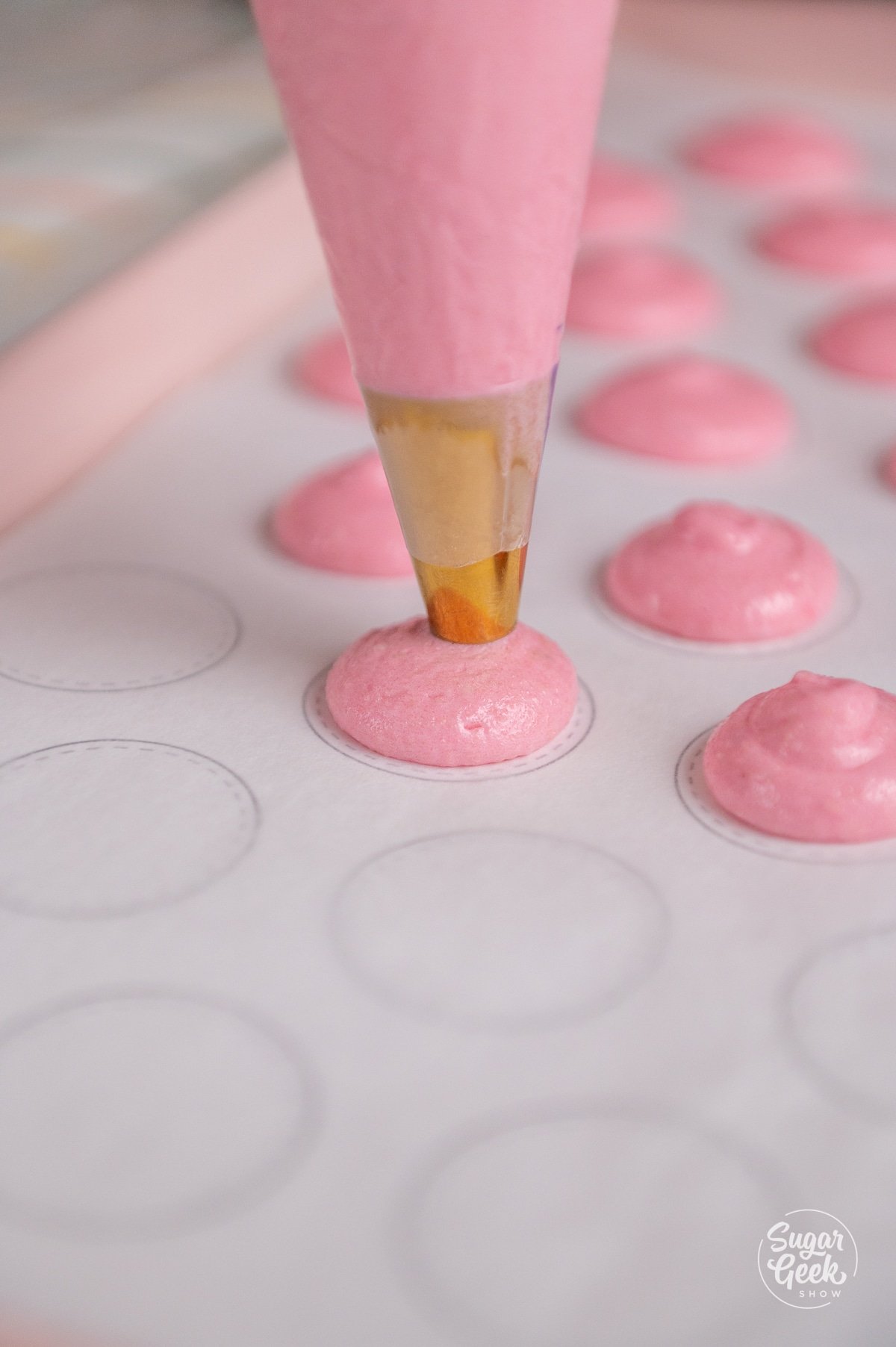
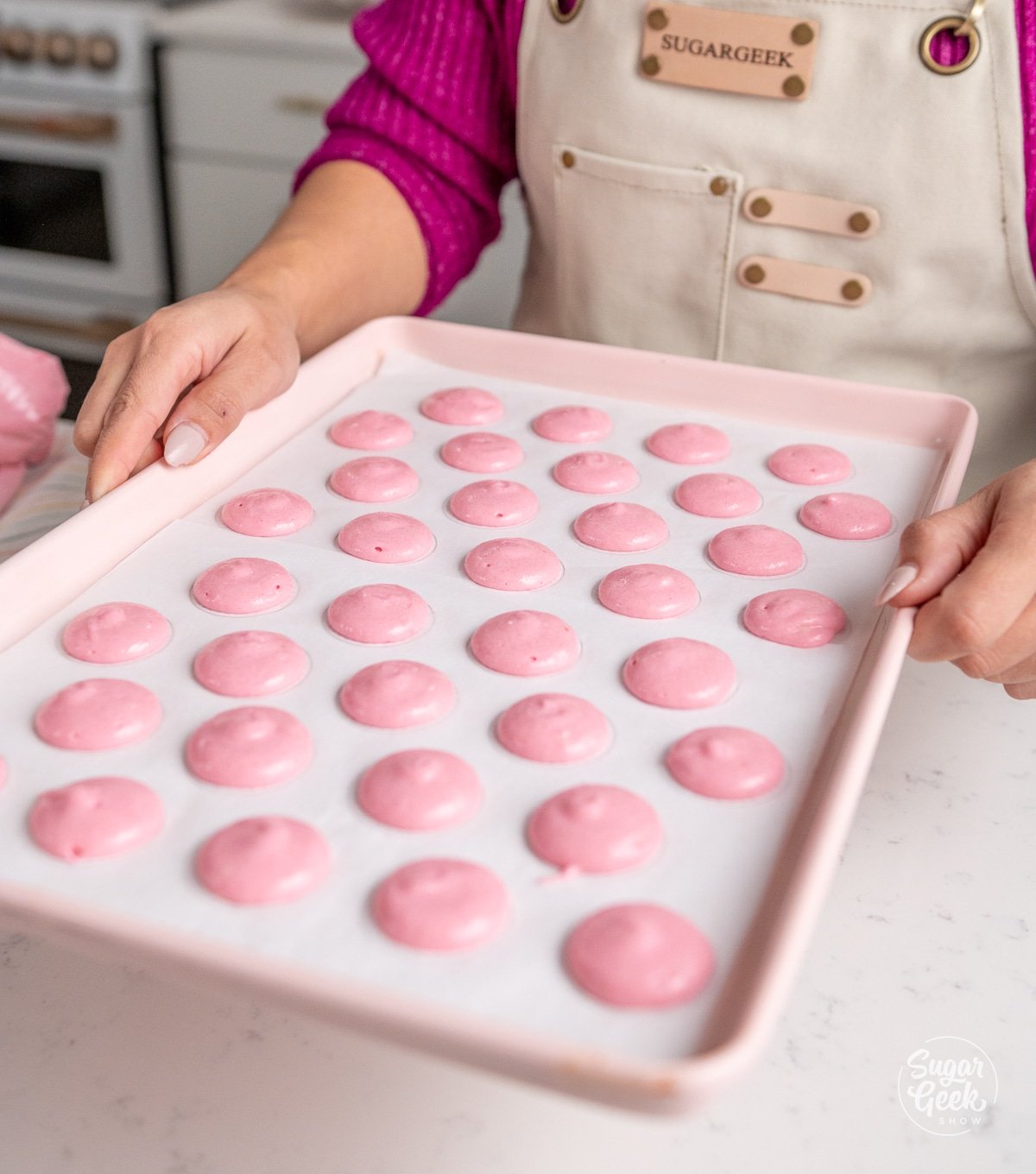
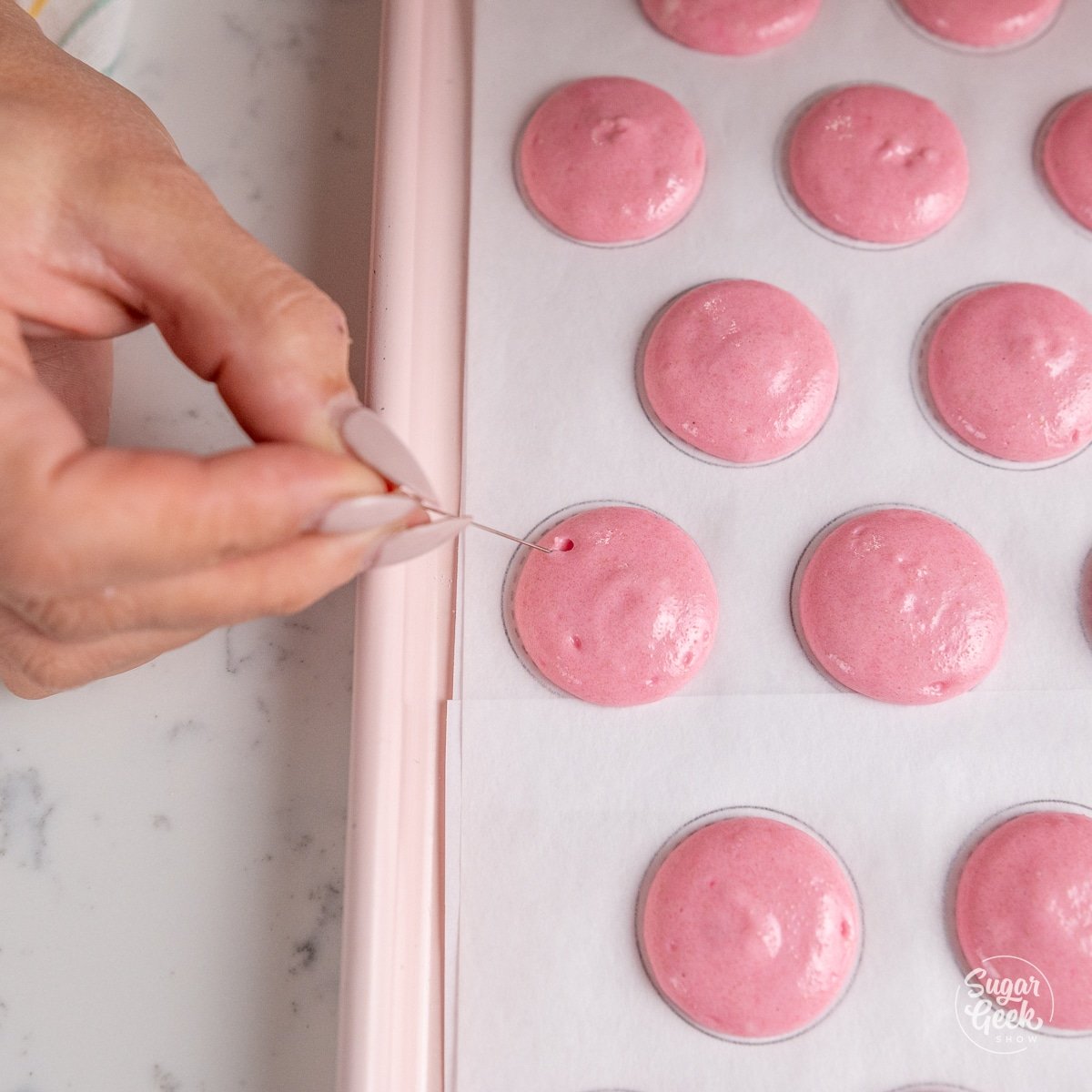
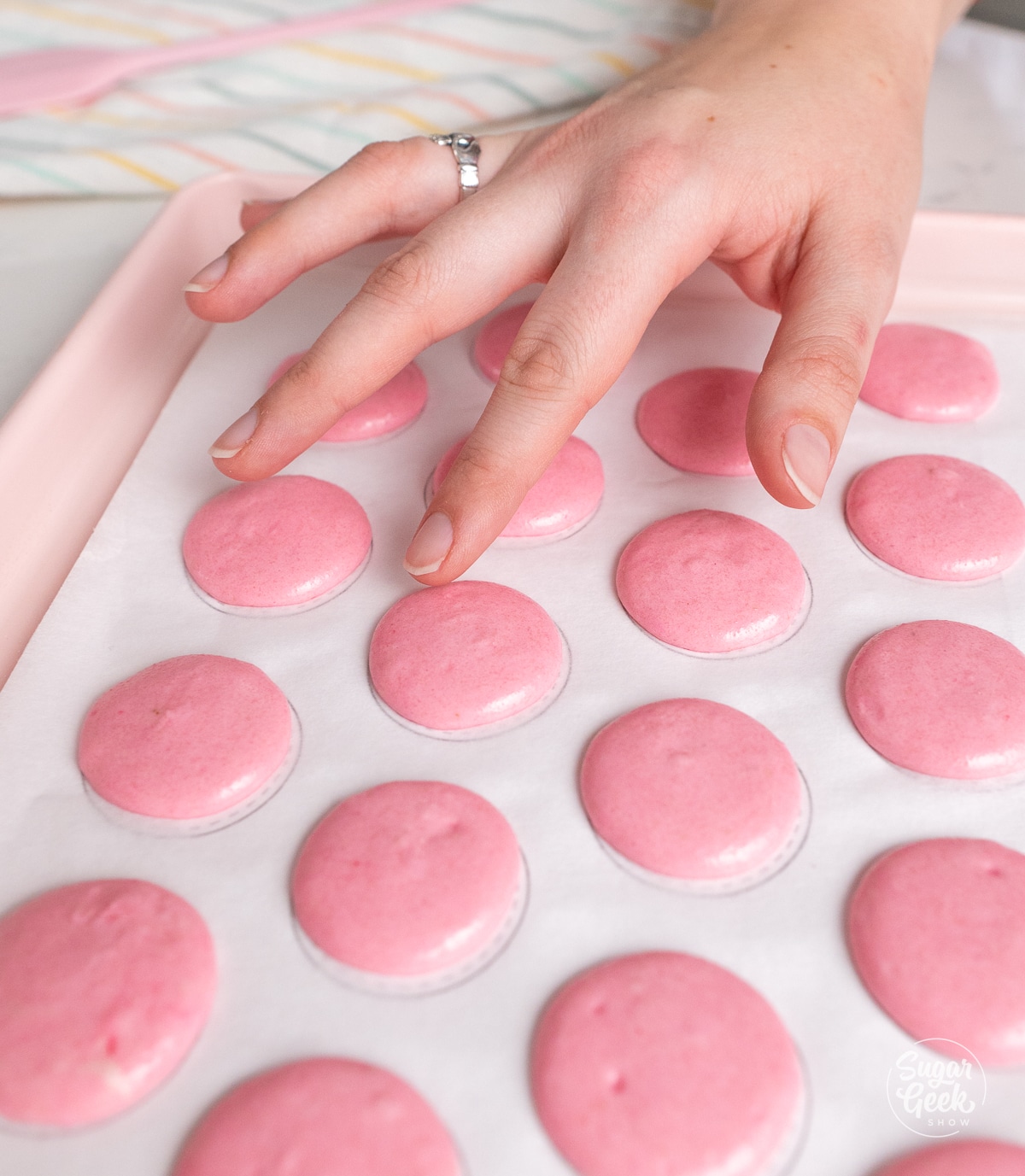
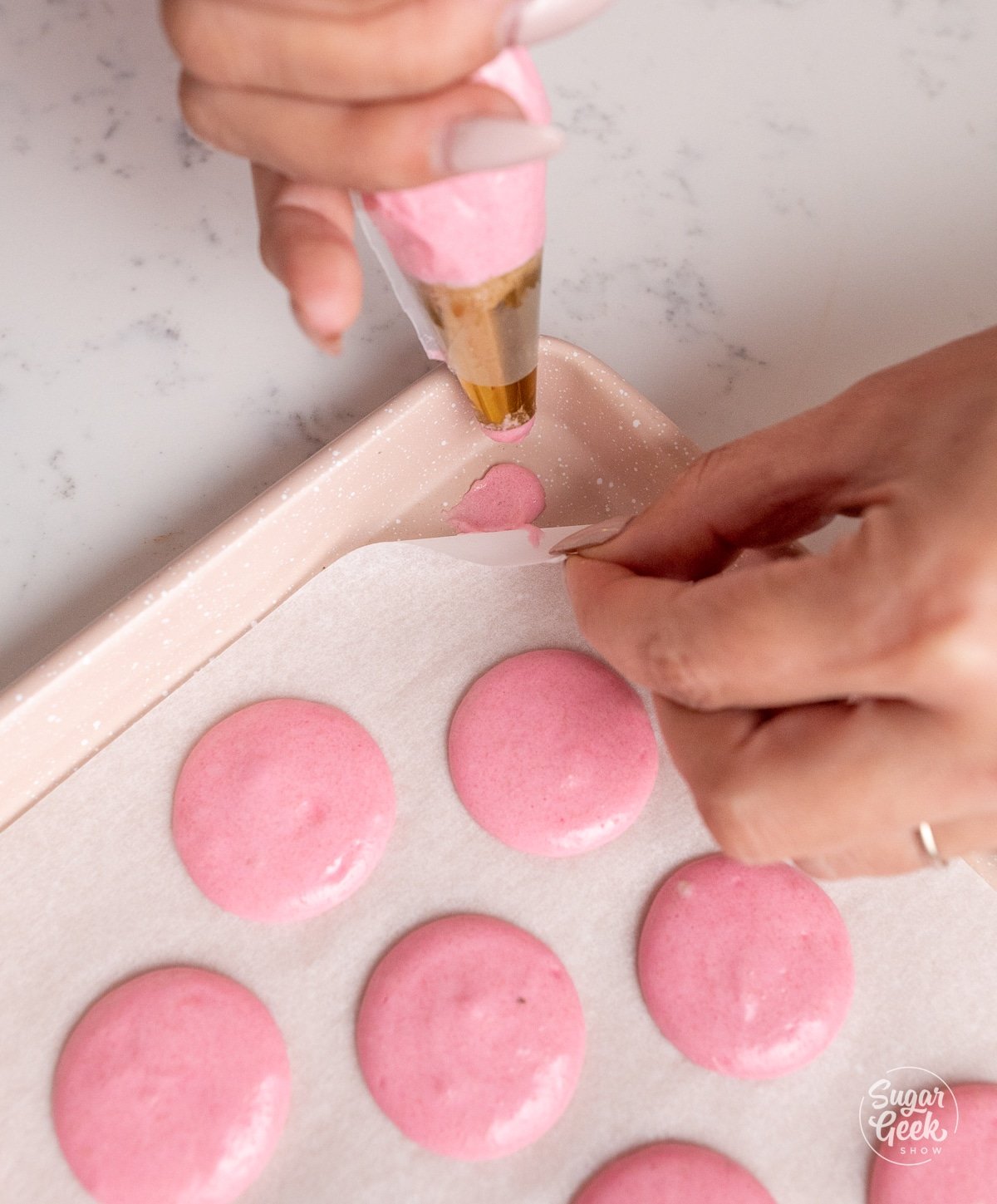
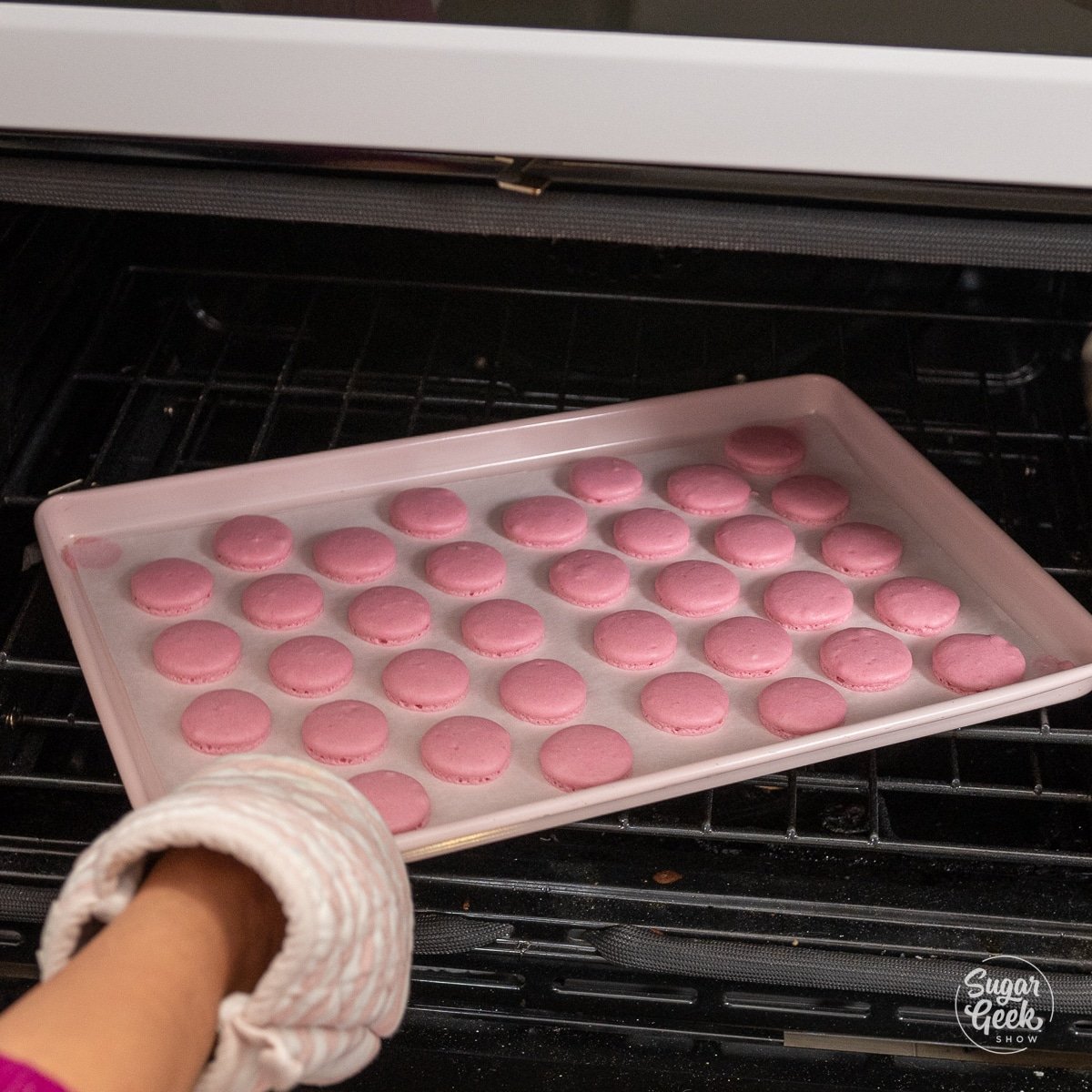
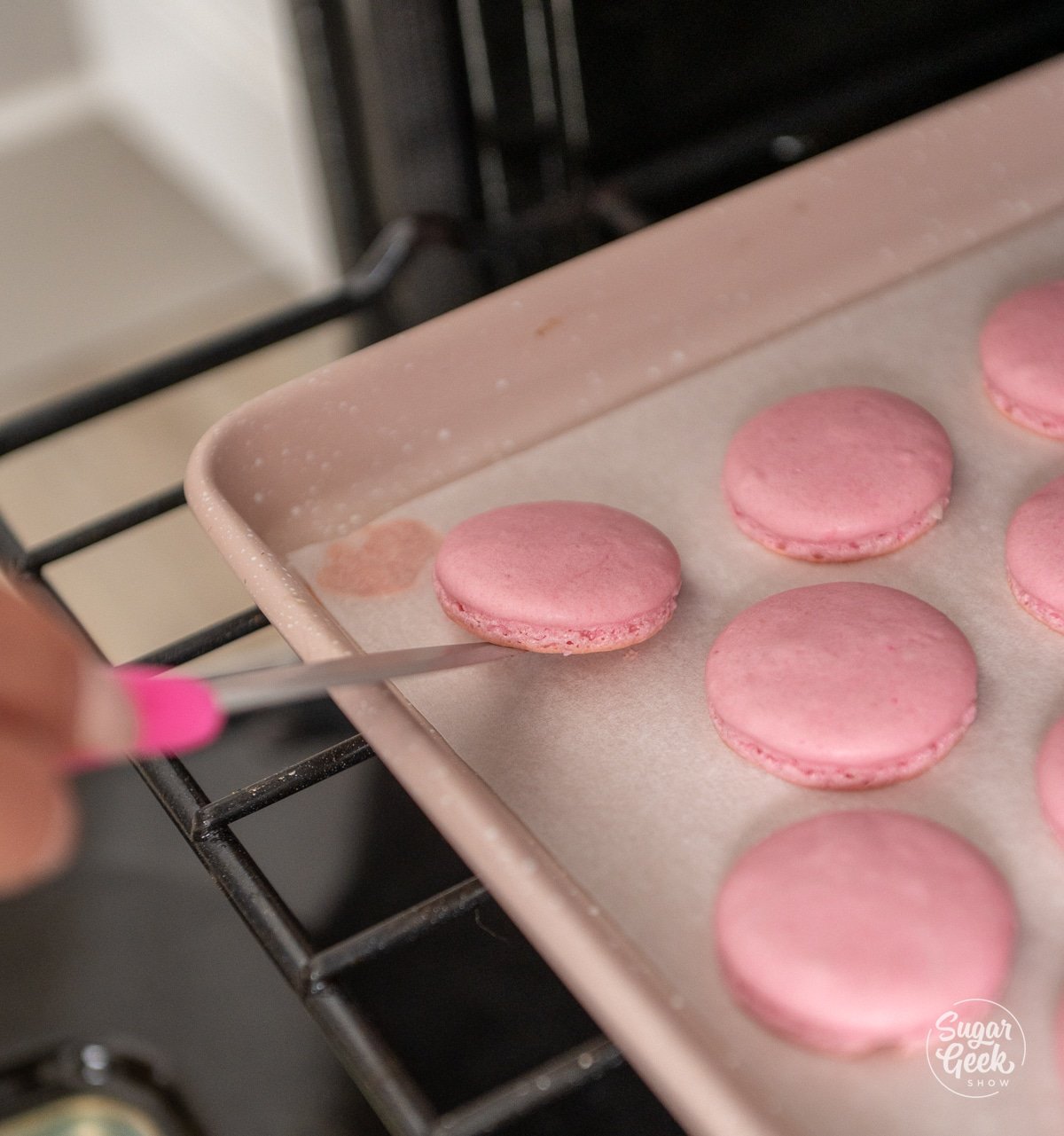
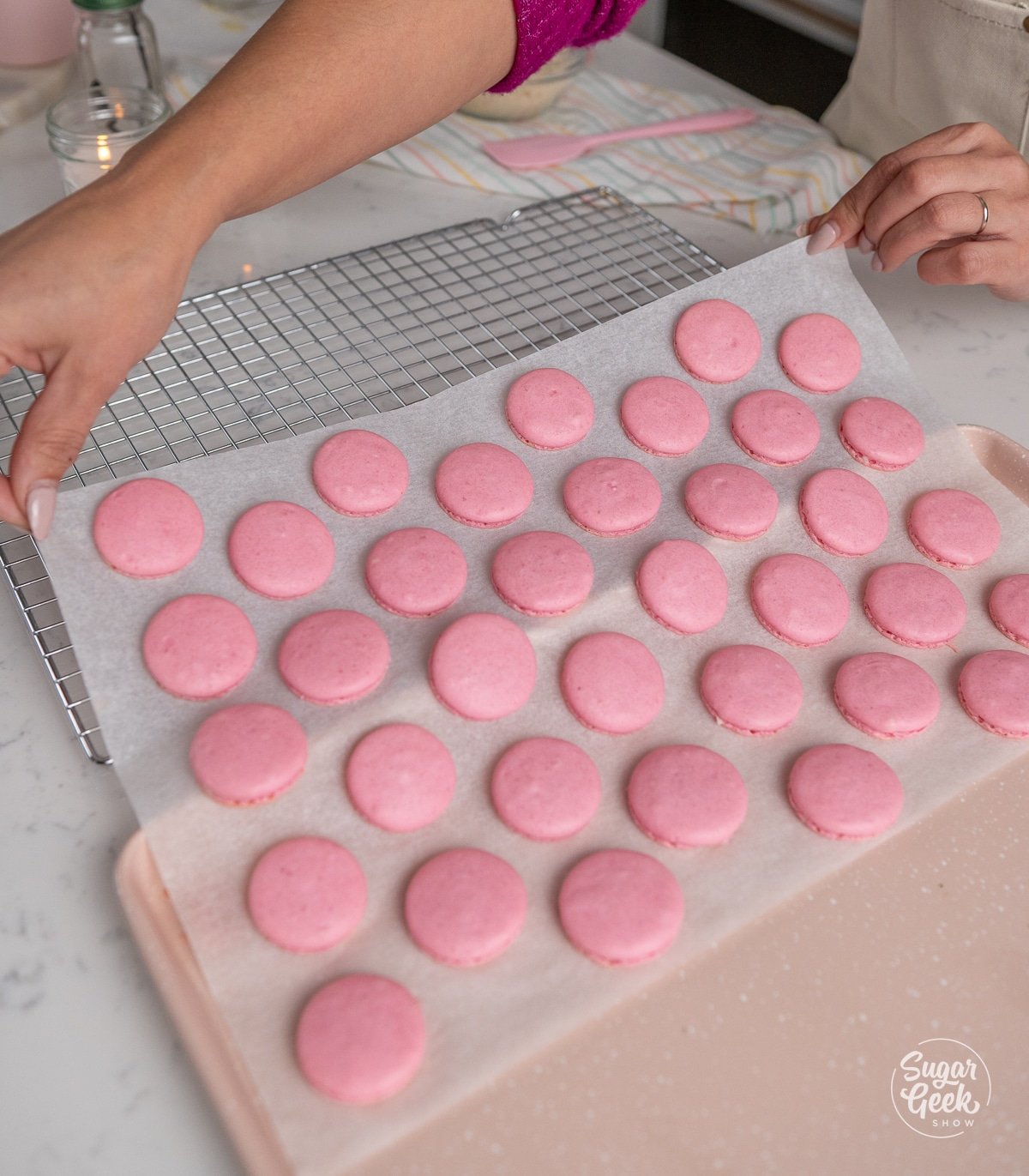
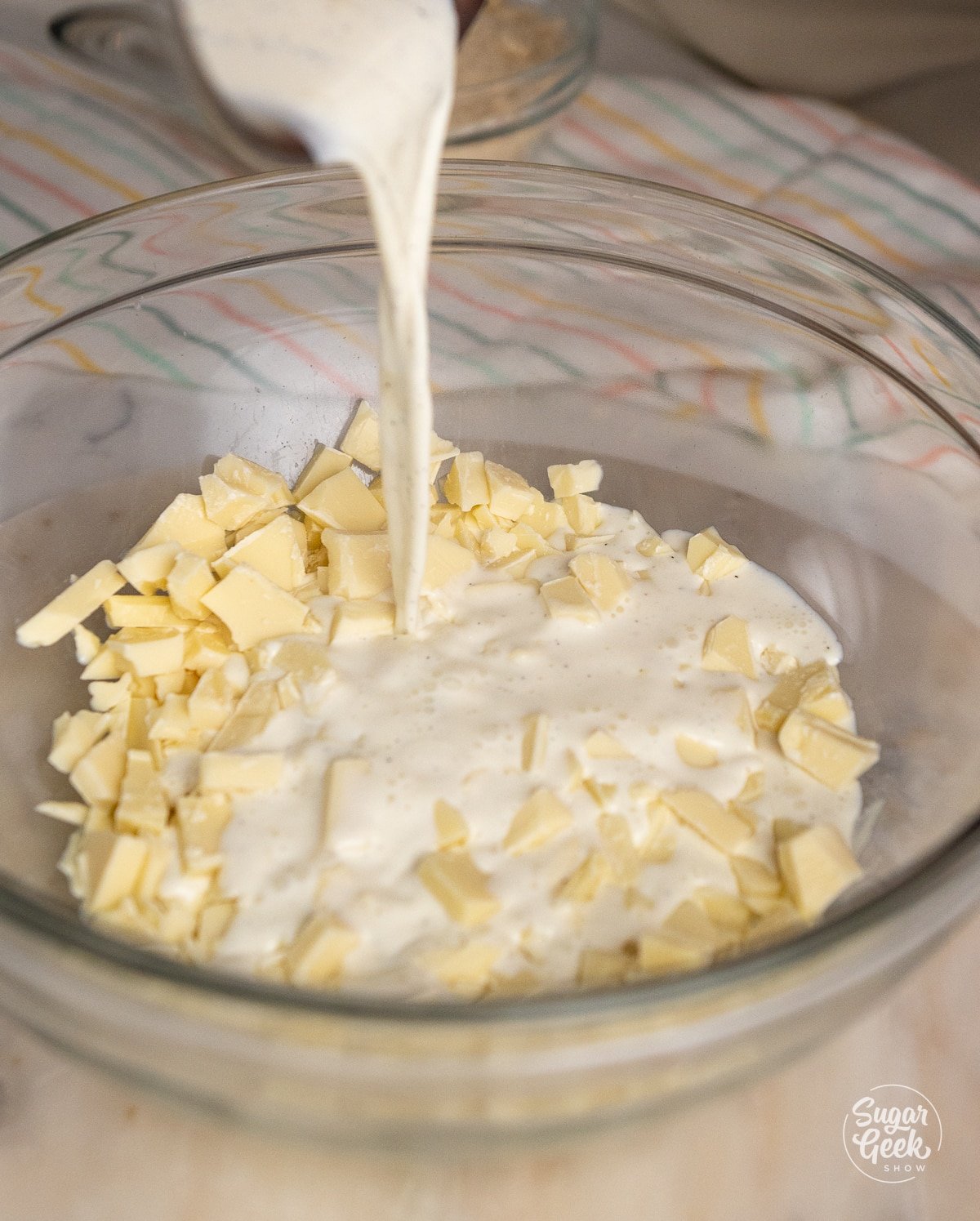
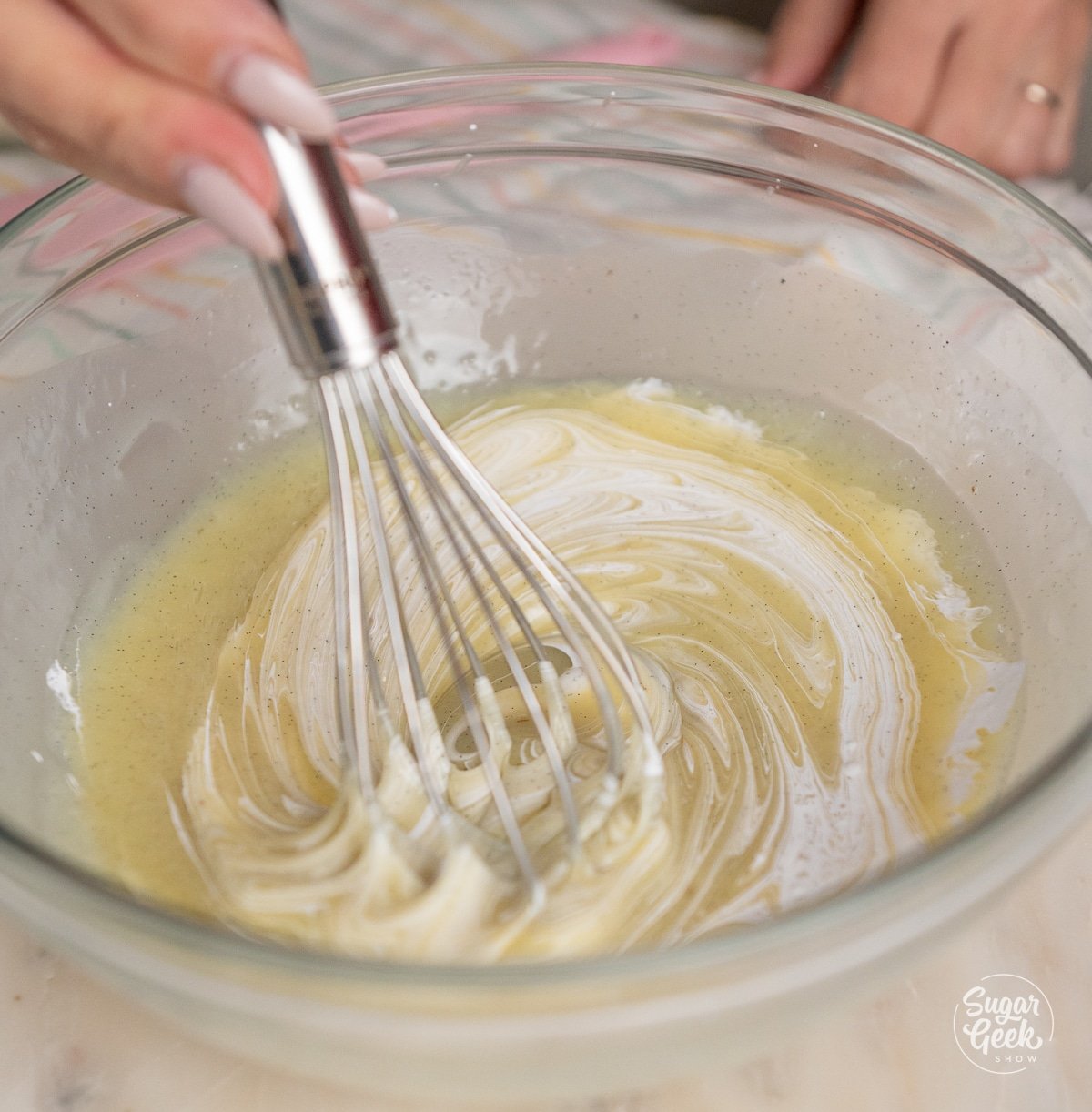
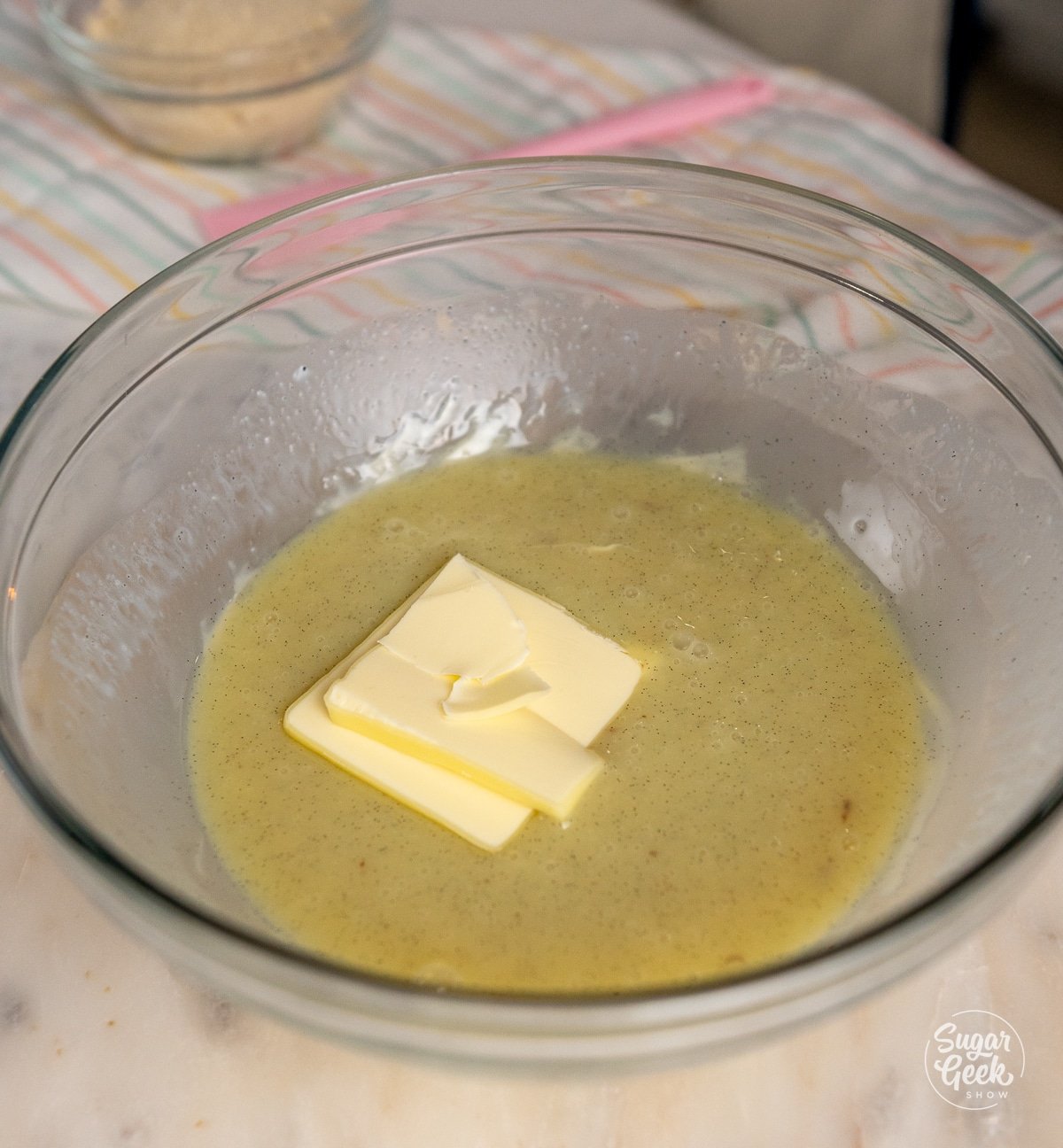

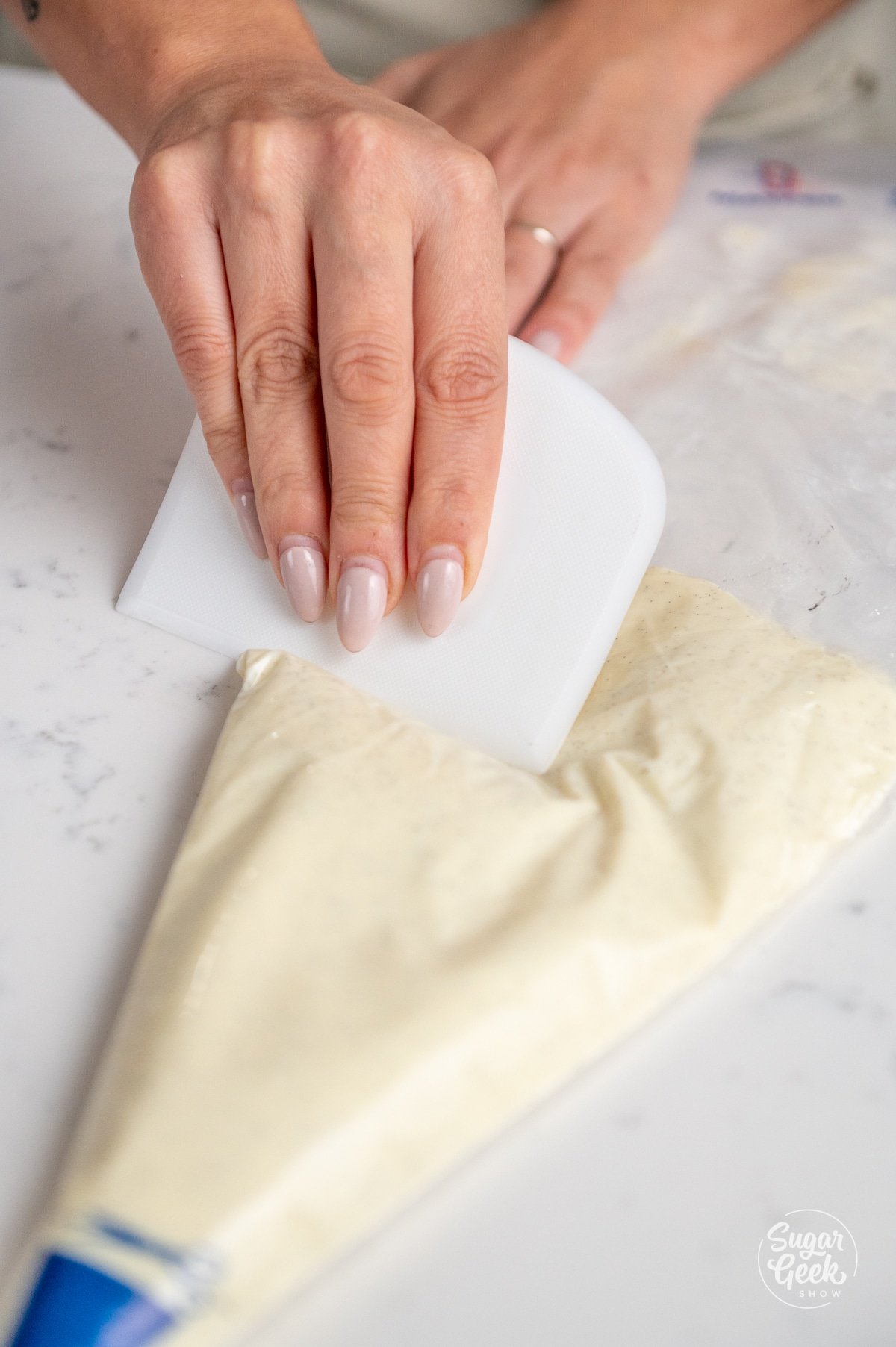
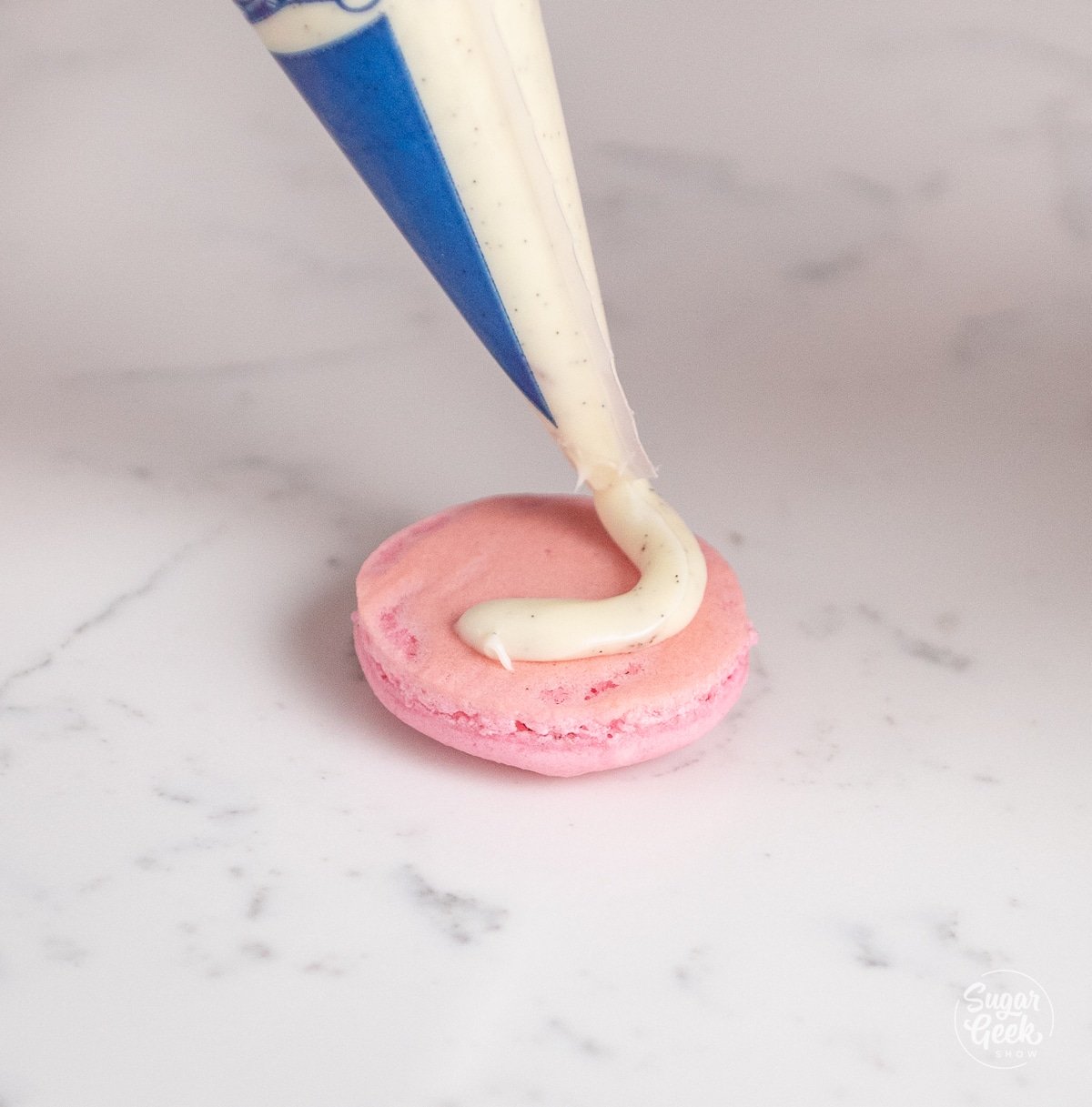
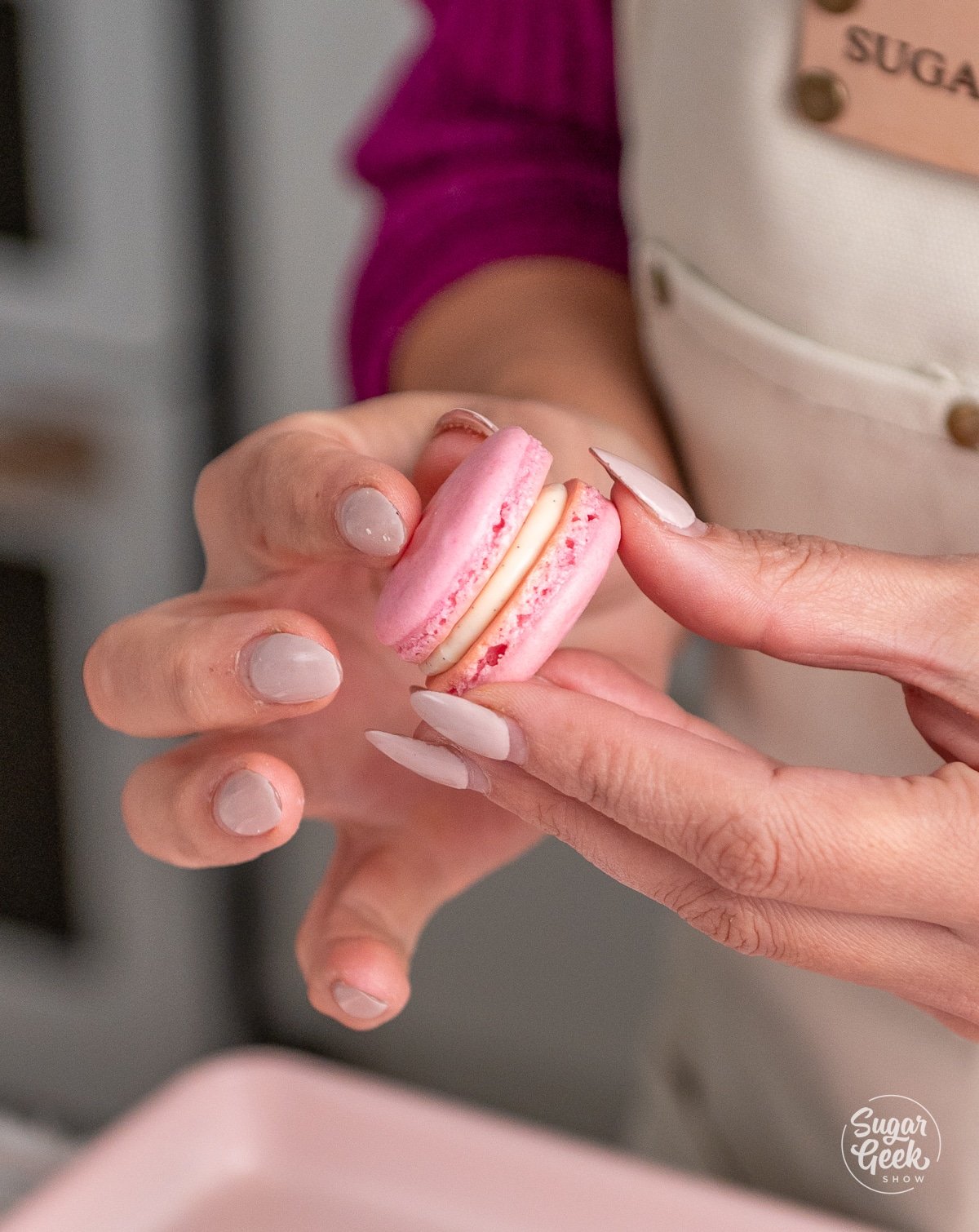

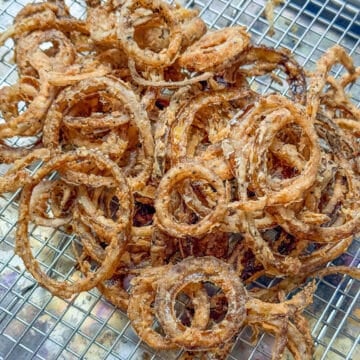
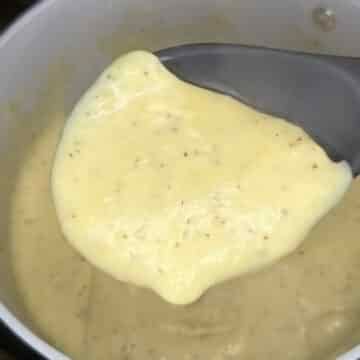
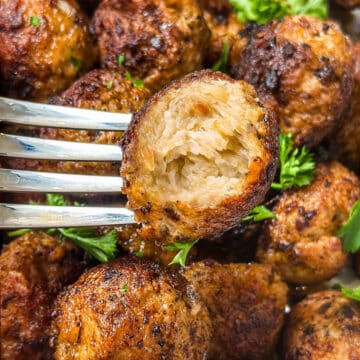
Laveena D'Souza says
Hi , can these be made out of Cashew flour
Elizabeth Marek says
I haven't tested that
Kristy says
Can you only use extracts to flavor the actual cookie? Or can I add cocoa powder or freeze dried fruits to the batter (if so, how much)? Thank you!
Elizabeth Marek says
Check out my chocolate macaron recipe for adding cocoa powder. You could replace cocoa powder with freeze-dried powder
Jon says
Followed your recipe to the letter, but skipped the tartar and they came out perfect! Great recipe.Thanks!!
Shannon P says
If you want to add freeze-dried strawberries to the batter, how much do you add?
Elizabeth Marek says
I would only add a teaspoon or two and remove the same amount (by weight) of powdered sugar
Nat says
Hi, I followed your recipe and made macrons 5 times already. Each time I failed. The problem with my macrons are that they are hollow. Can you tell me what I did wrong?
Elizabeth Marek says
A hollow macaron is not a failure. Using the Italian method might help you reduce hollows but I do not teach that method because it requires boiling of syrup and I don't enjoy that extra step. There are many tutorials on the Italian method for french macarons on youtube.
Laura says
Hi Liz! I tried to make macarons once with a different recipe and they did not turn out, the dough was thin and was a mess! Today is my parents anniversary and I wanted to make something special. THIS RECIPE WAS A TOTAL SUCSESS! It was super easy fo make! Thx for the tutorial! 😉
Elizabeth Marek says
Im so happy to hear that! Happy anniversary to your parents 😀
Wilma says
Can I use brown eggs? For this recipe
Elizabeth Marek says
Yes you can
Laurie says
Great Recipe. Definitely the best one I have seen, especially with all the troubleshooting advice. I forgot to age the egg whites and left out cream of tartar and they still turned out beautiful. I sandwiched the cookies with raspberry whippers cream and they were delicious. Thanks!
Robin says
This is a great recipe! I made macarons for the first time using this recipe and they turned out amazing! I was so expecting something to go wrong. Was glad I carefully read through the post and possible pitfalls to looks out for. Can't wait to try more flavor combinations. Thank you so much for this recipe.
Lilly says
Hi there, can I replace the almond flour with whole almond flour without changing the amounts in this recipe?
Thanks!
Elizabeth Marek says
Yes you can, you will just have speckles in your finished macarons from the skins
Ana says
Hi 🙂 i love your recipes and never have an issue however with this recipe i noticed you used ounces instead of grams and i cant seem to find proper conversions into grams online. I would really like to try this can you please give me the amounts in grams it would be much appreciated ❤
Sugar Geek Show says
Hi! In the recipe card the grams are in parentheses next to the ounces. 1 Oz= 28 grams
Peace says
Hi, Thanks so much for sharing. Please advise on what one could use as a replacement for cream of tartar.thank you
Sugar Geek Show says
You don't 100% need to use cream of tartar if you're using fresh egg whites, it just helps your meringue whip up stronger. If you use pasteurized egg whites you should use it, though.
Evette says
Hi Liz,
Thanks a million for your recipe. Have baked french macarons in the past - and you are right.... it's very tough to get it correct the first few times. I will be trying your recipe soon and let you know how it went. Much appreciated.😀
Sarita Taylor says
Liz, thanks so much got the recipe. It's step by step and easy to follow. Made one batch already. Came out so-so but am doing another this weekend for Thanksgiving. Going to make autumn leaves, pumpkins and cornucopias. THANKS SO MUCH!
Shannon Rowley says
They turn out wonderful every time thanks to your simple but specific directions. Thank you for sharing your knowledge and experience.
Emily Dean says
I used your recipe and the shells came out fantastic. It ended up taking about 15/16 minutes to finish baking. I also didn’t age the eggs in the fridge but they were still fantastic. The first time my shells grew perfectly. Thanks for spending the time building this.